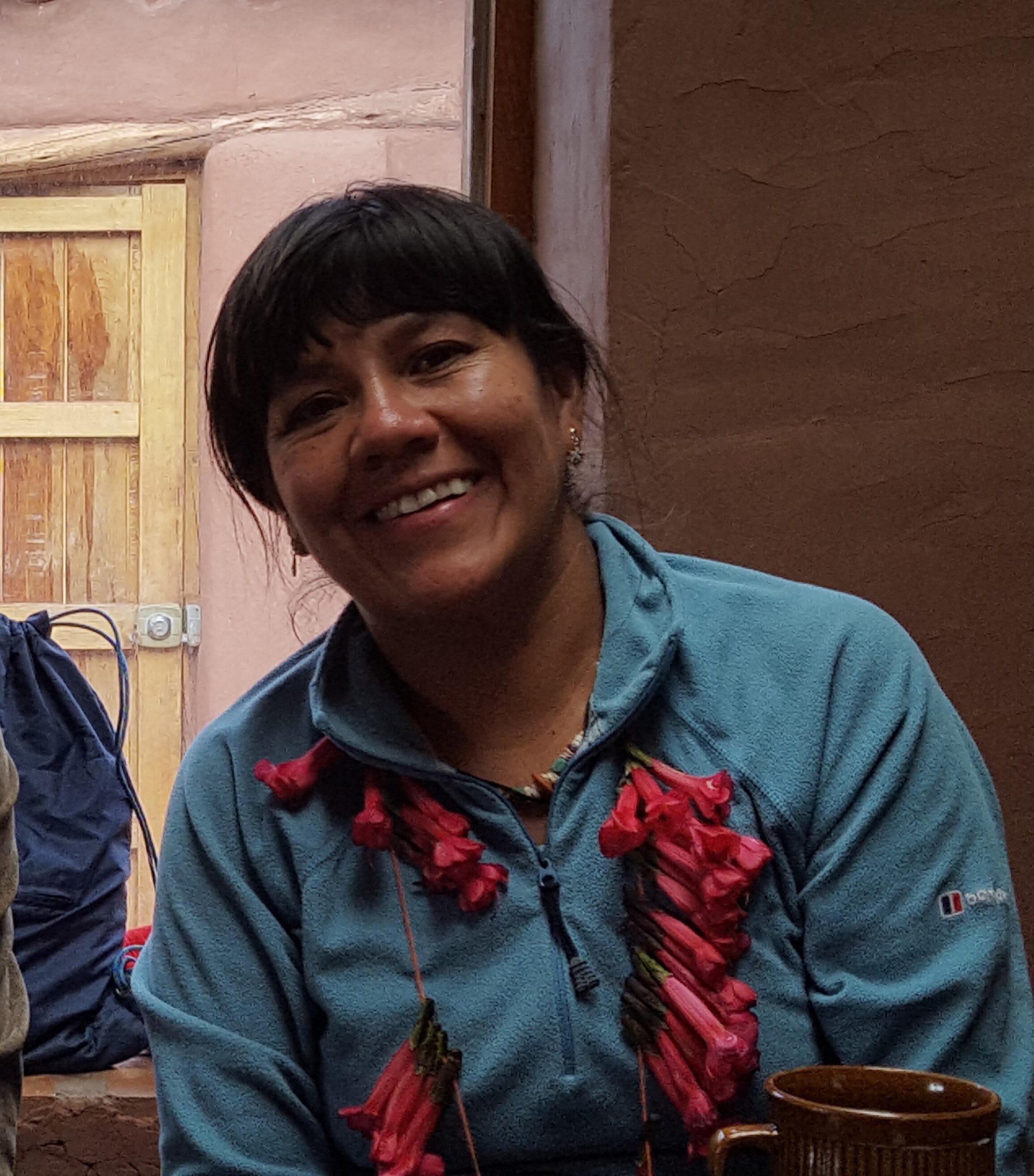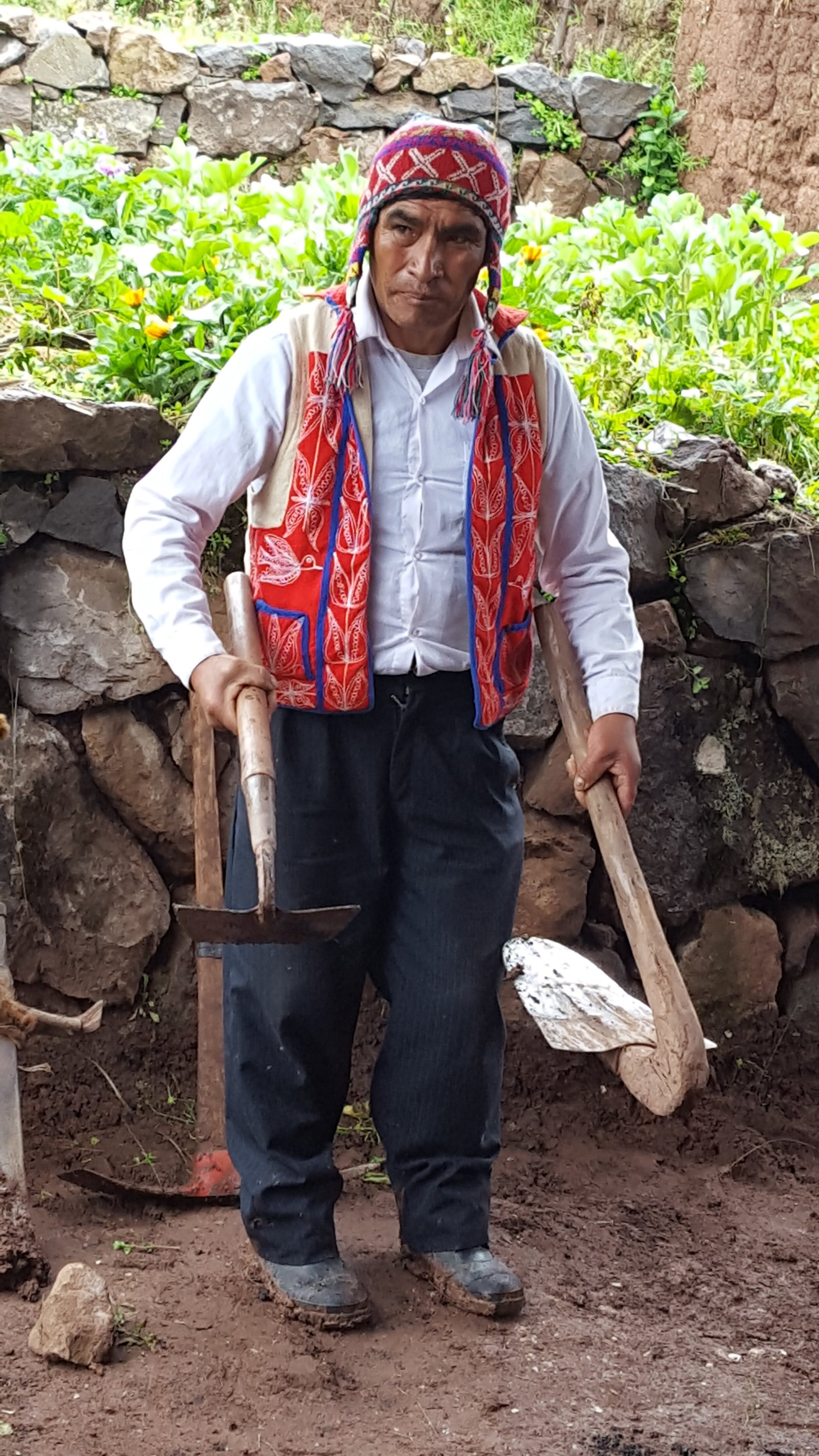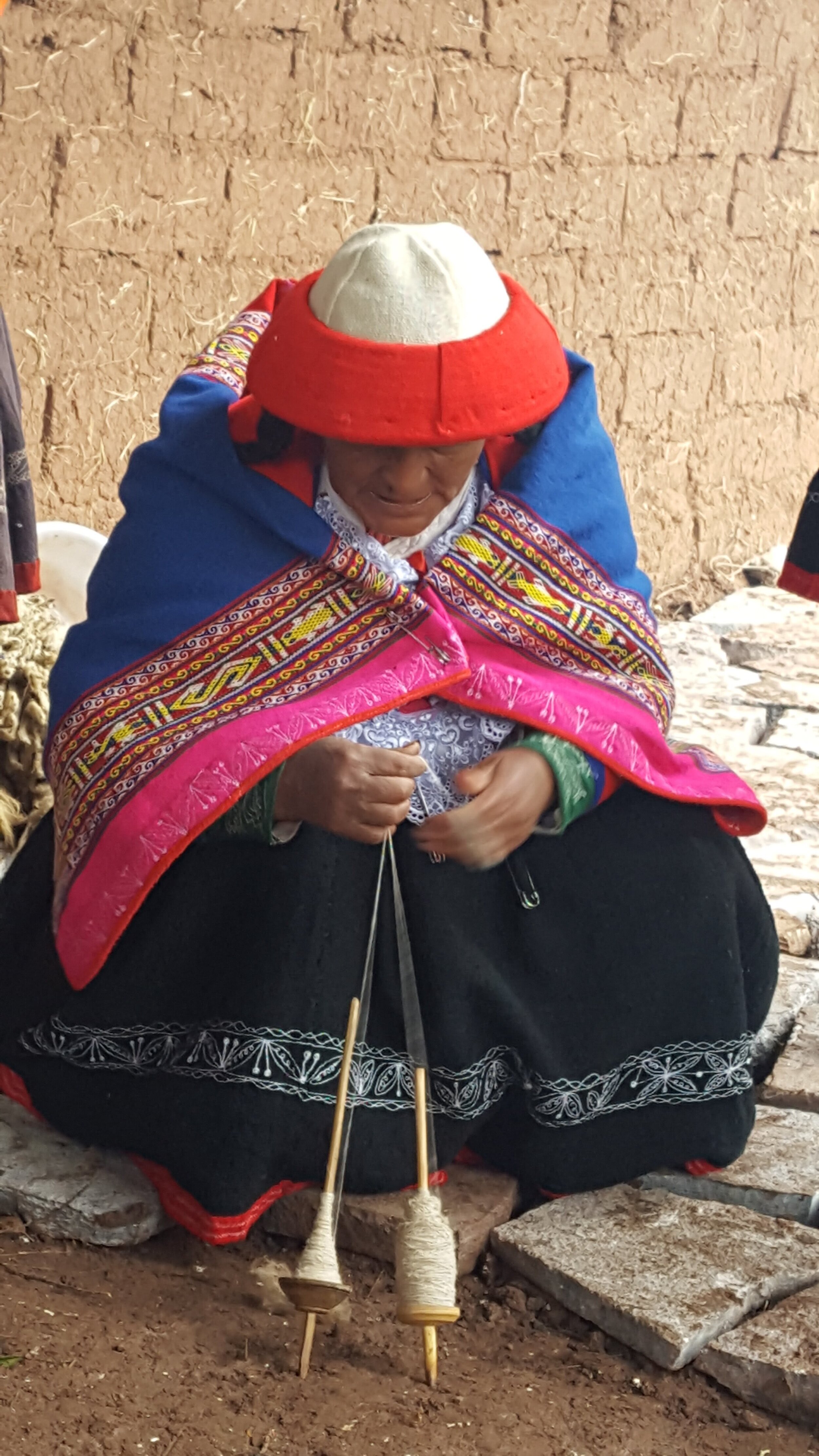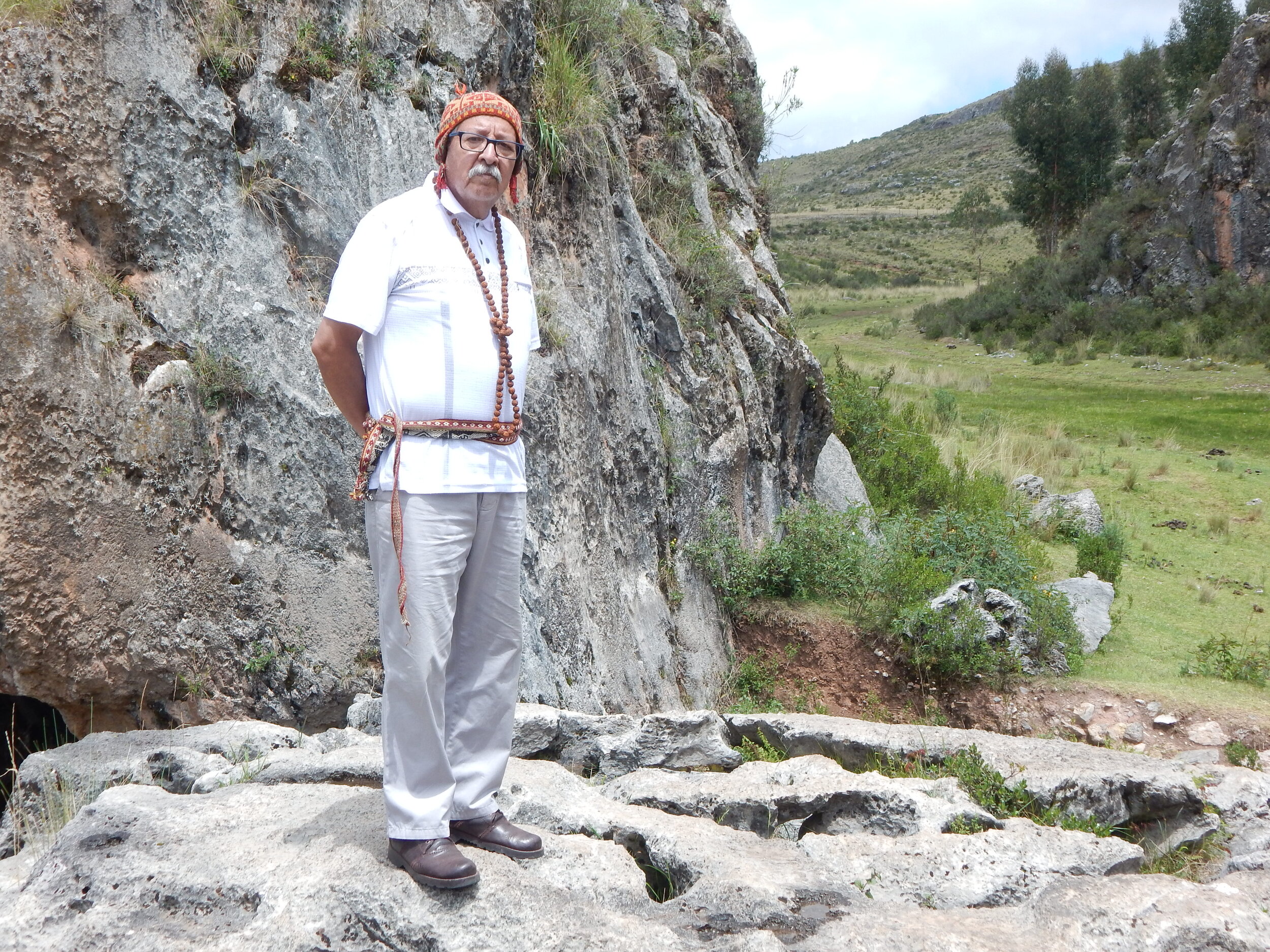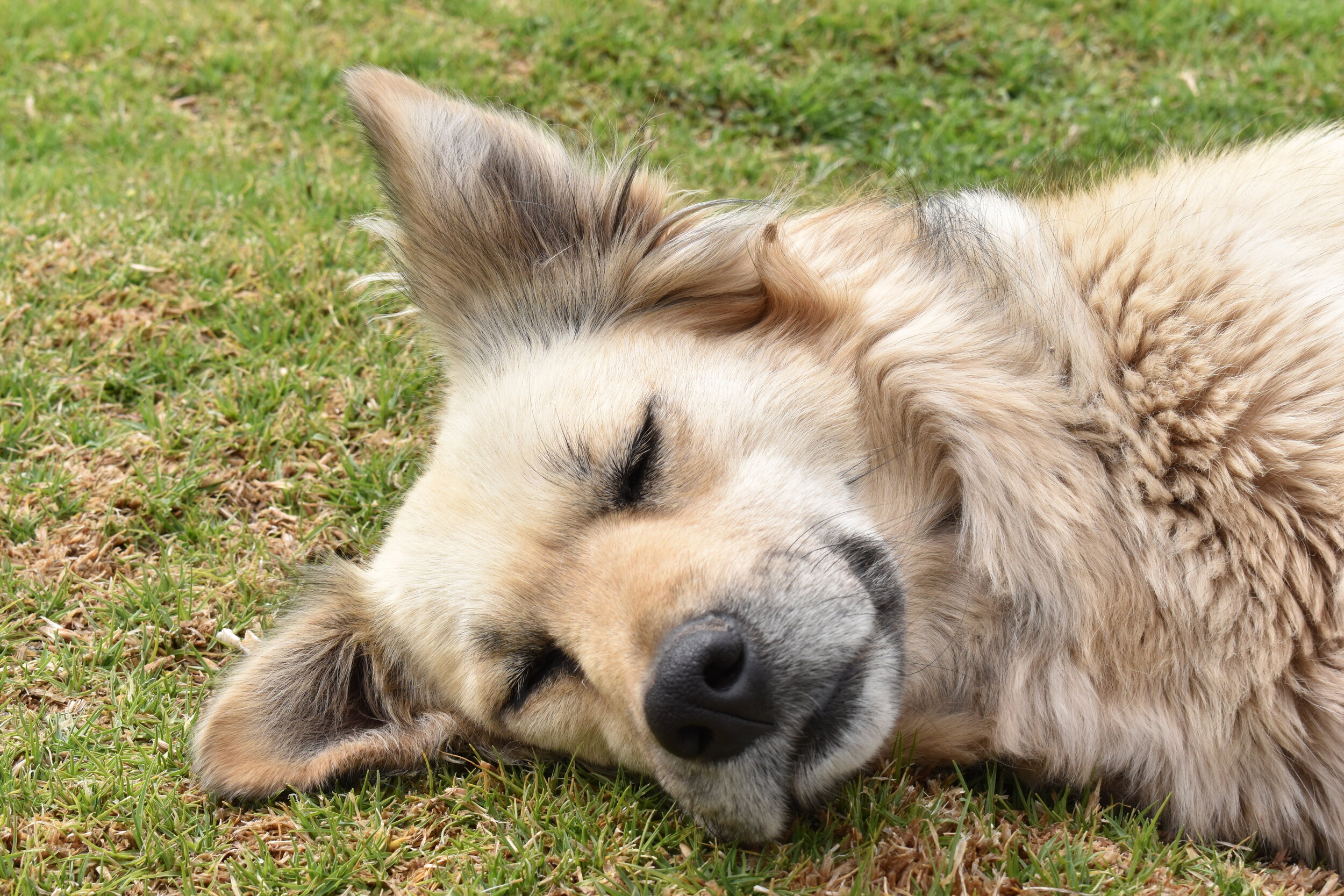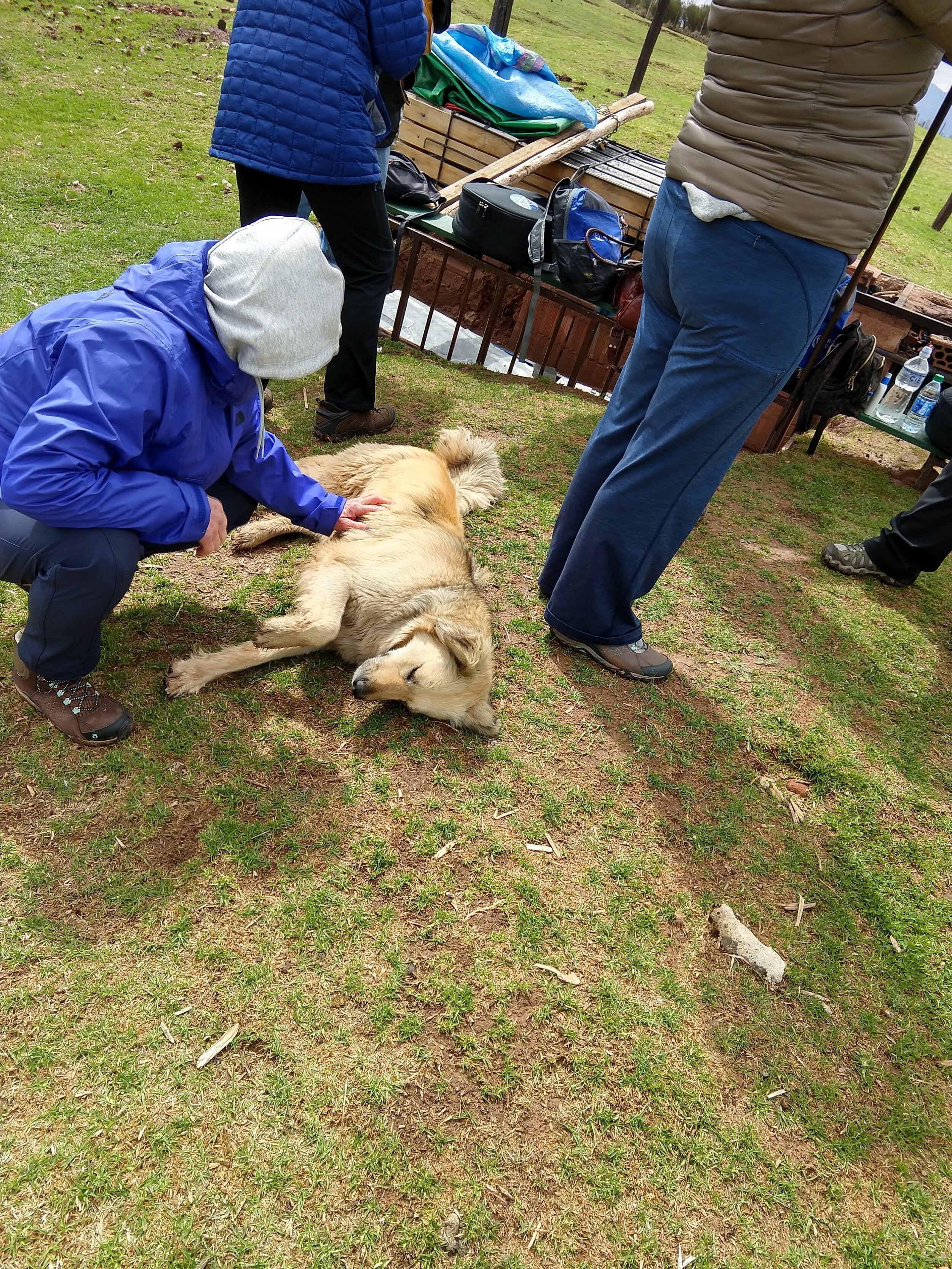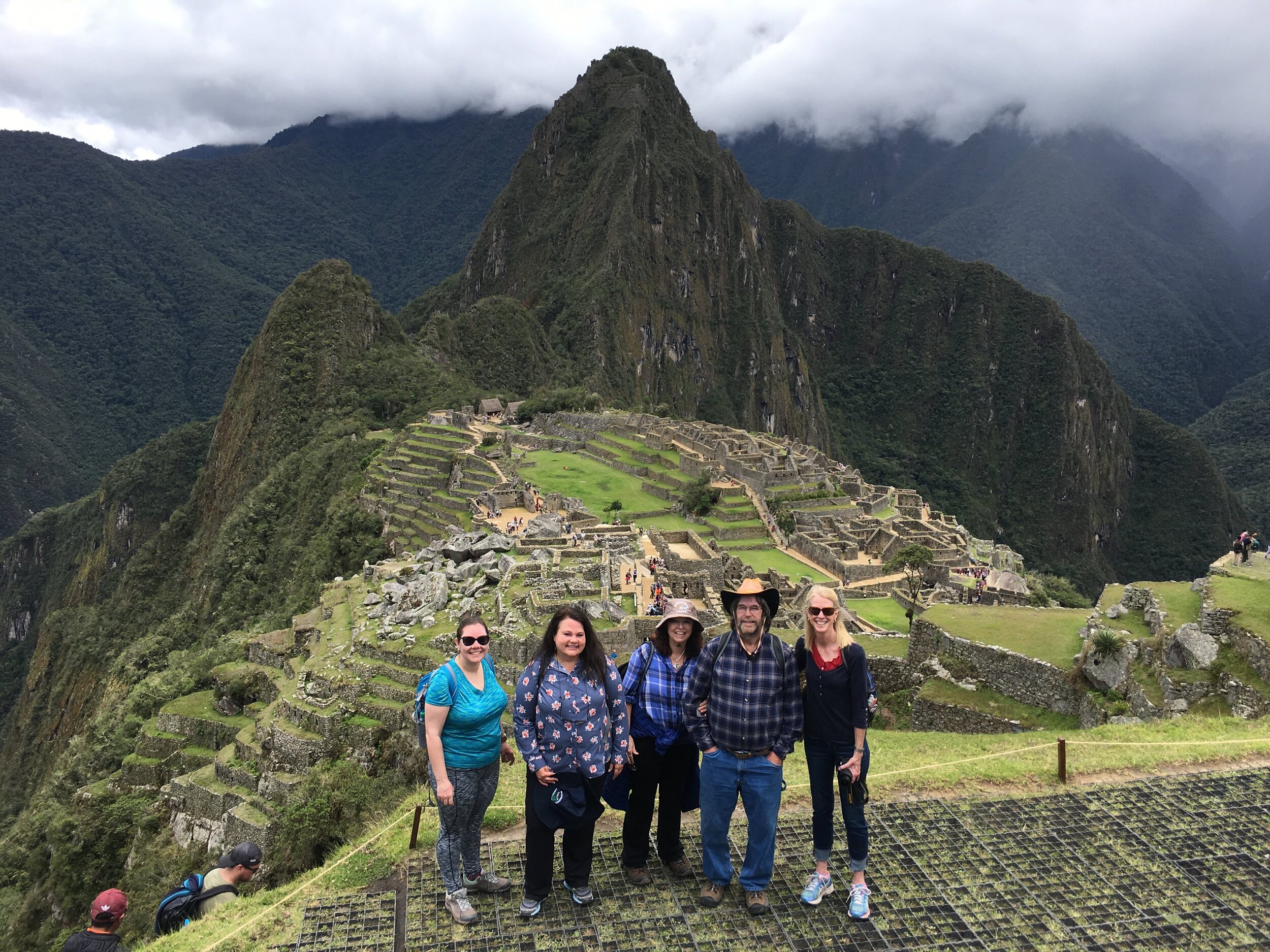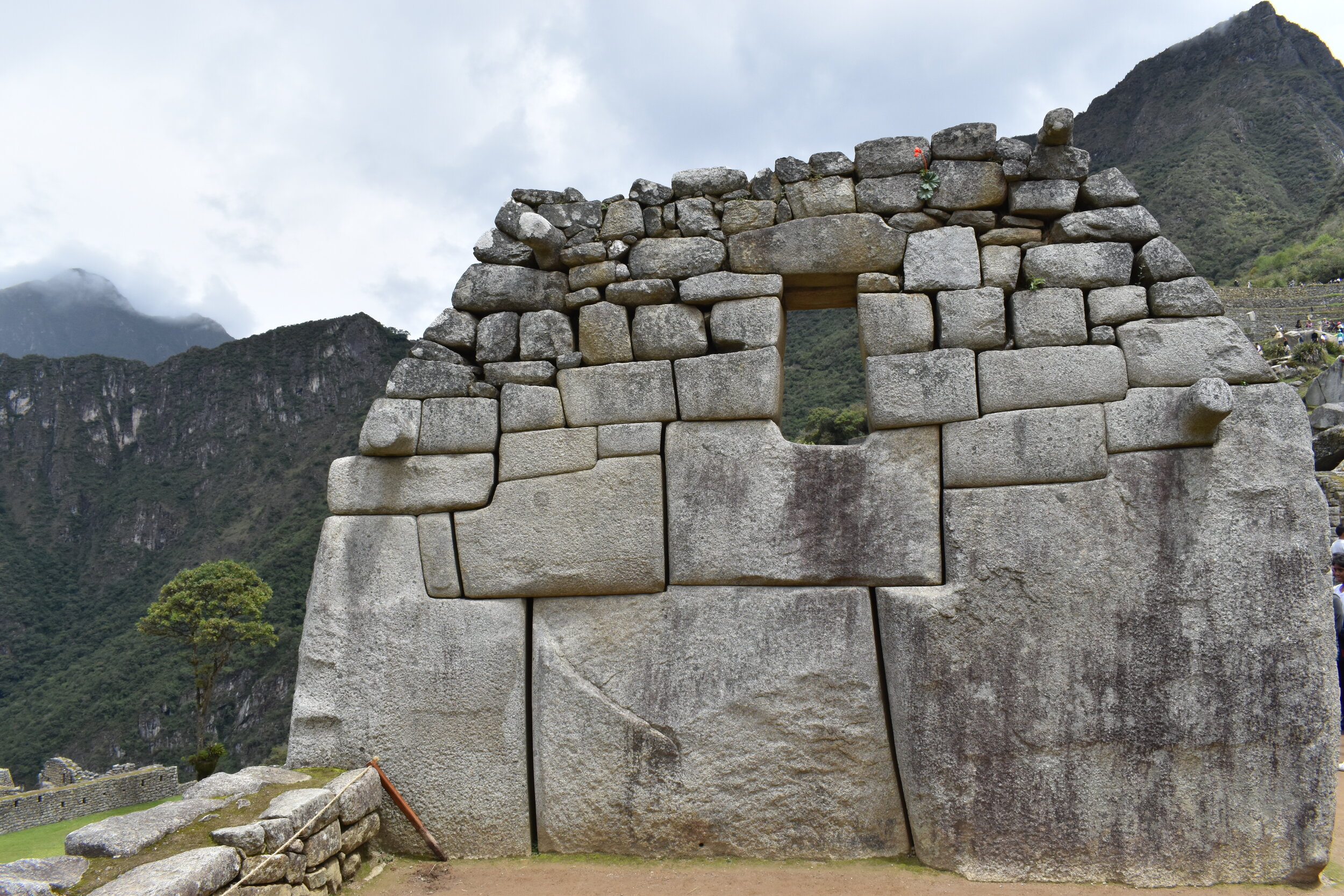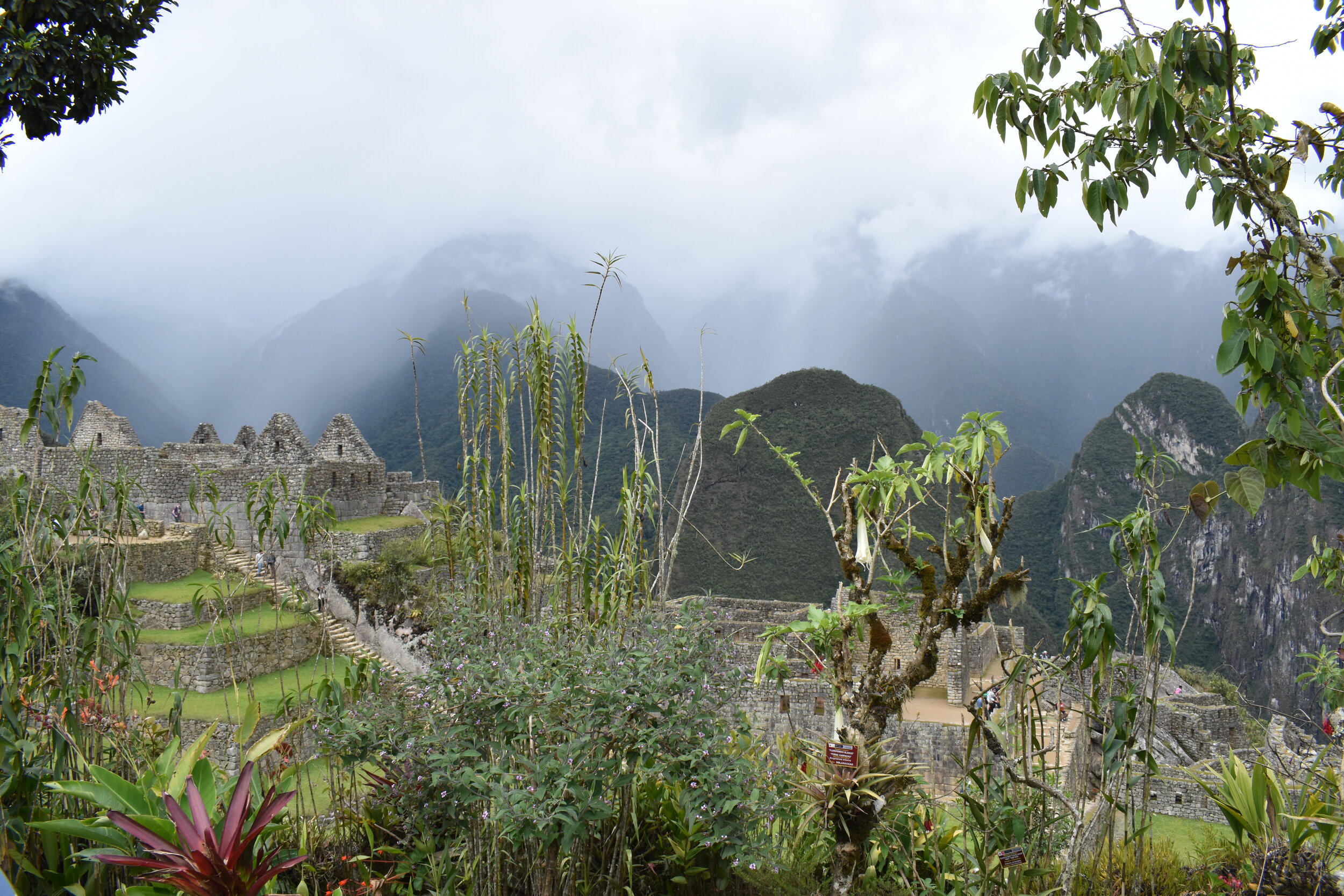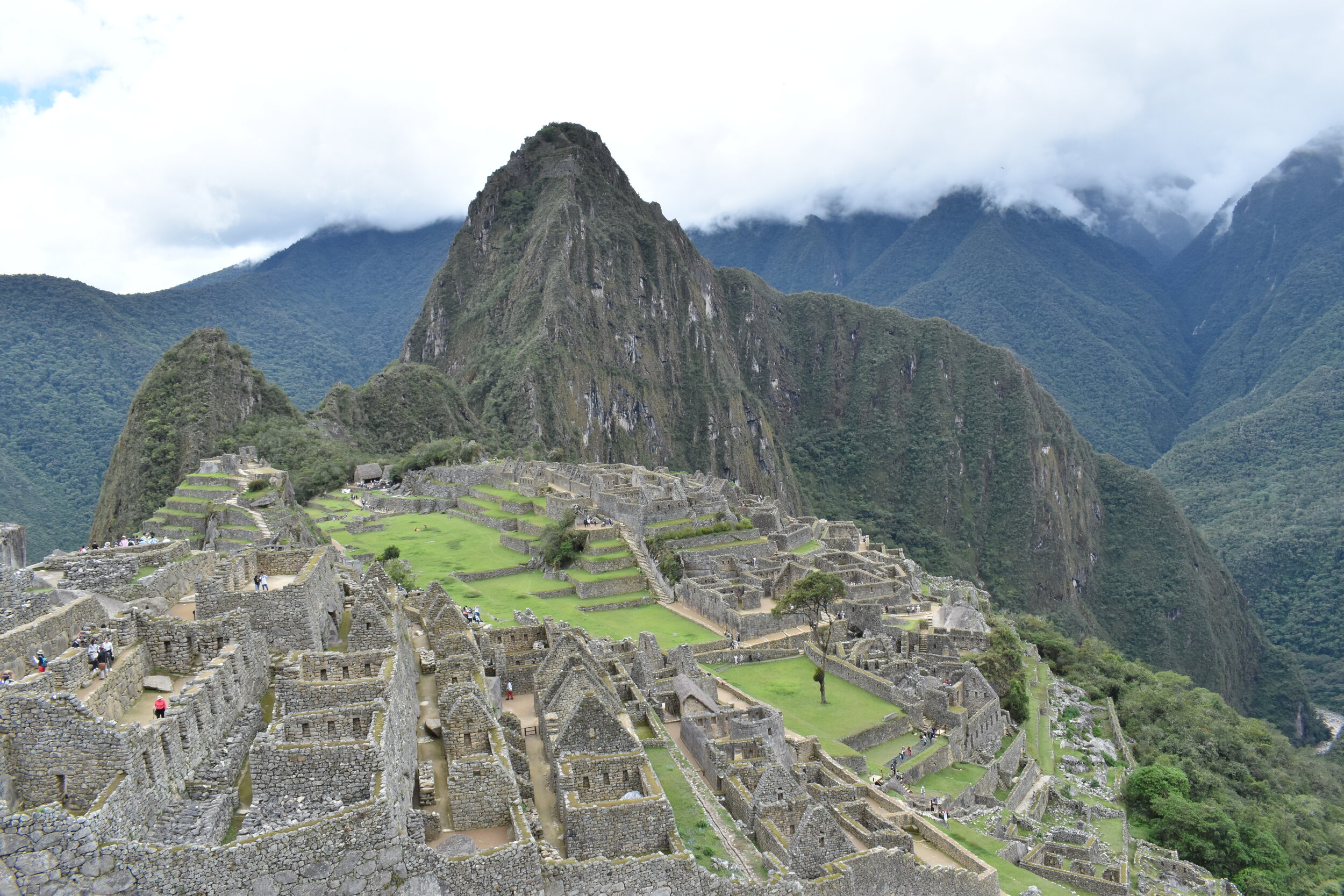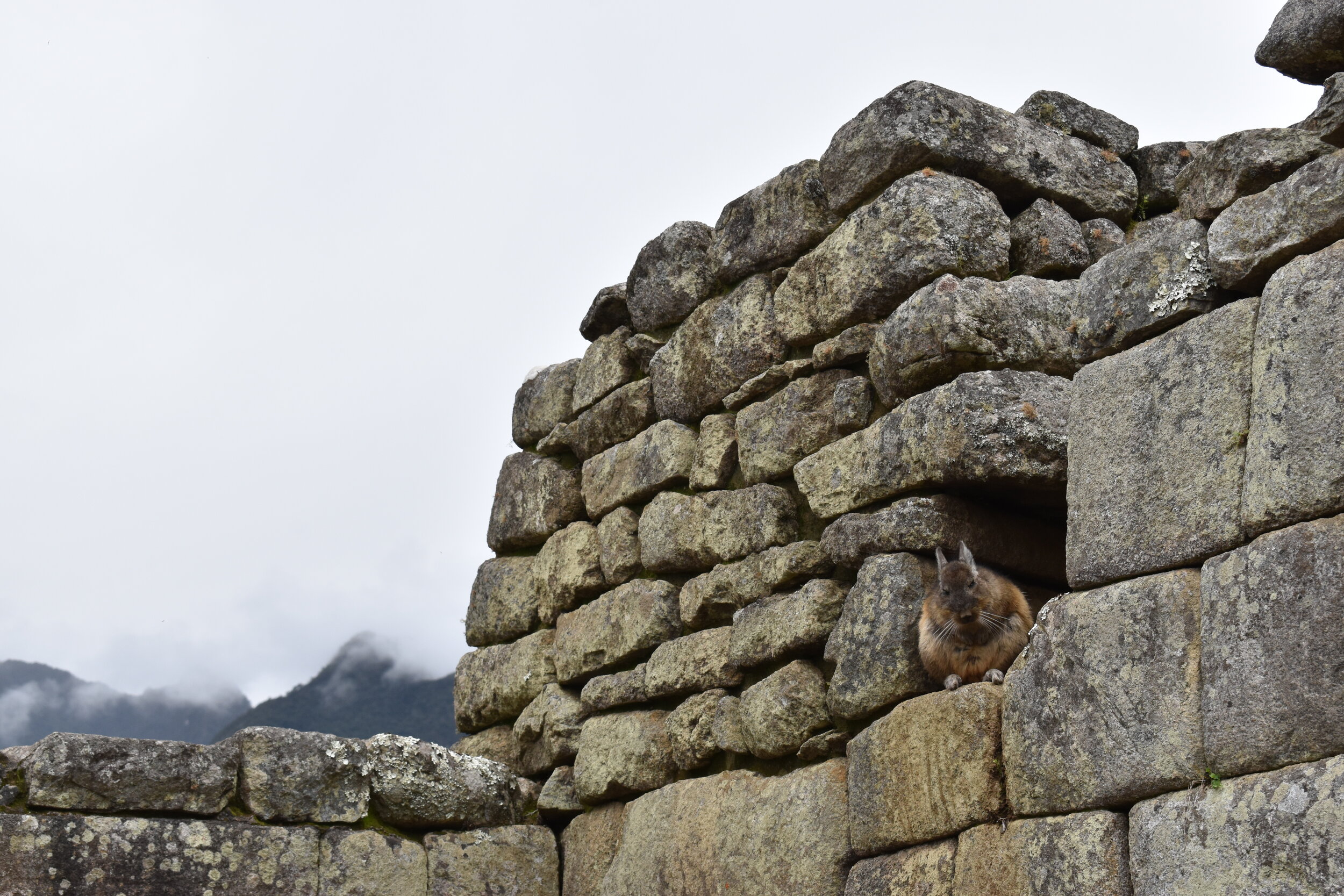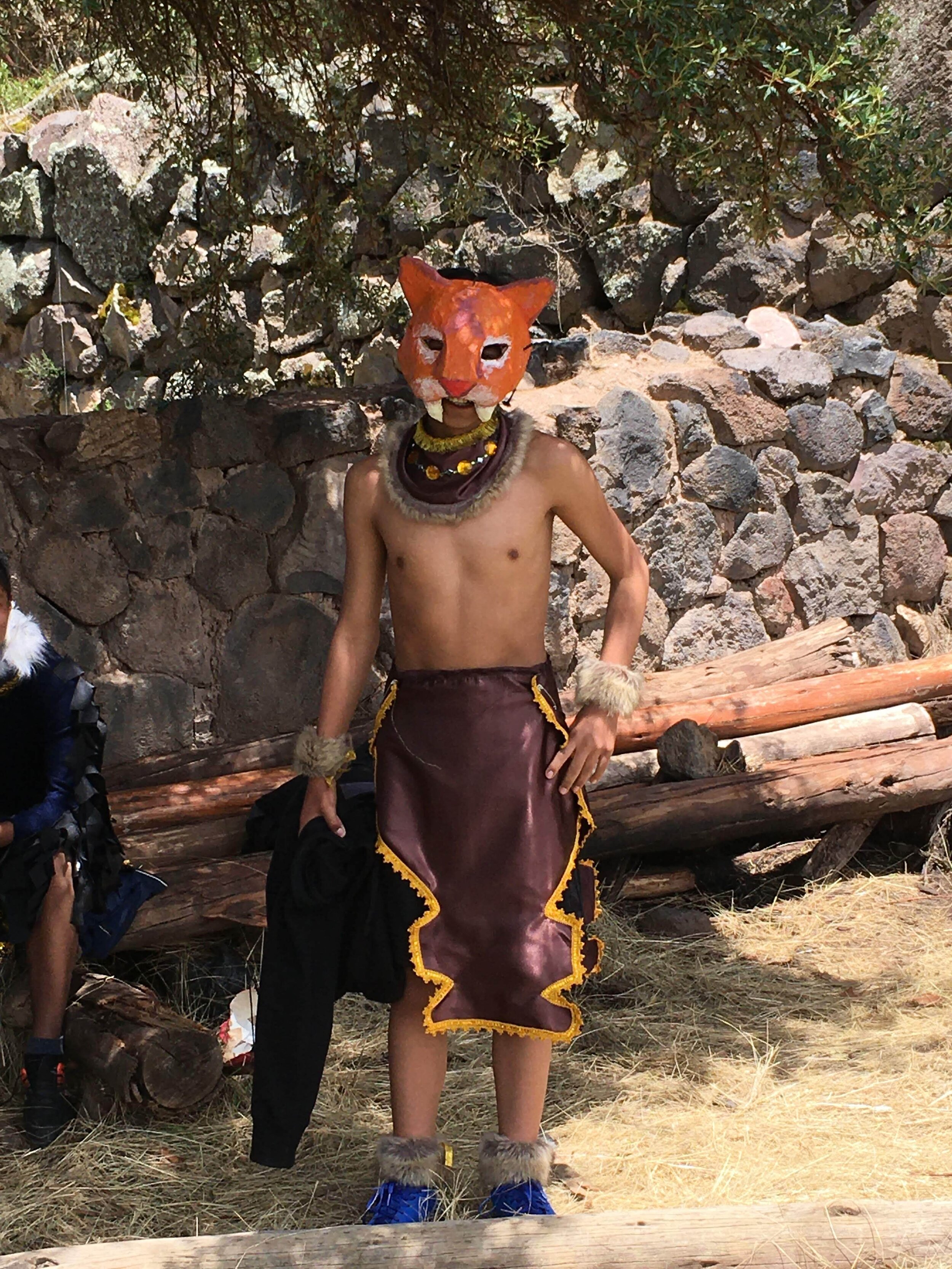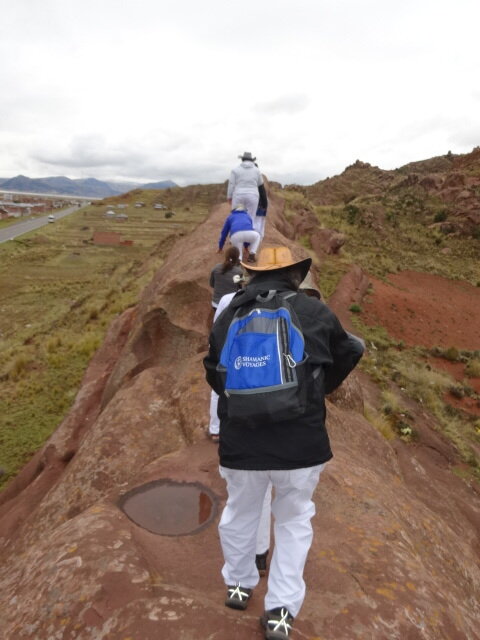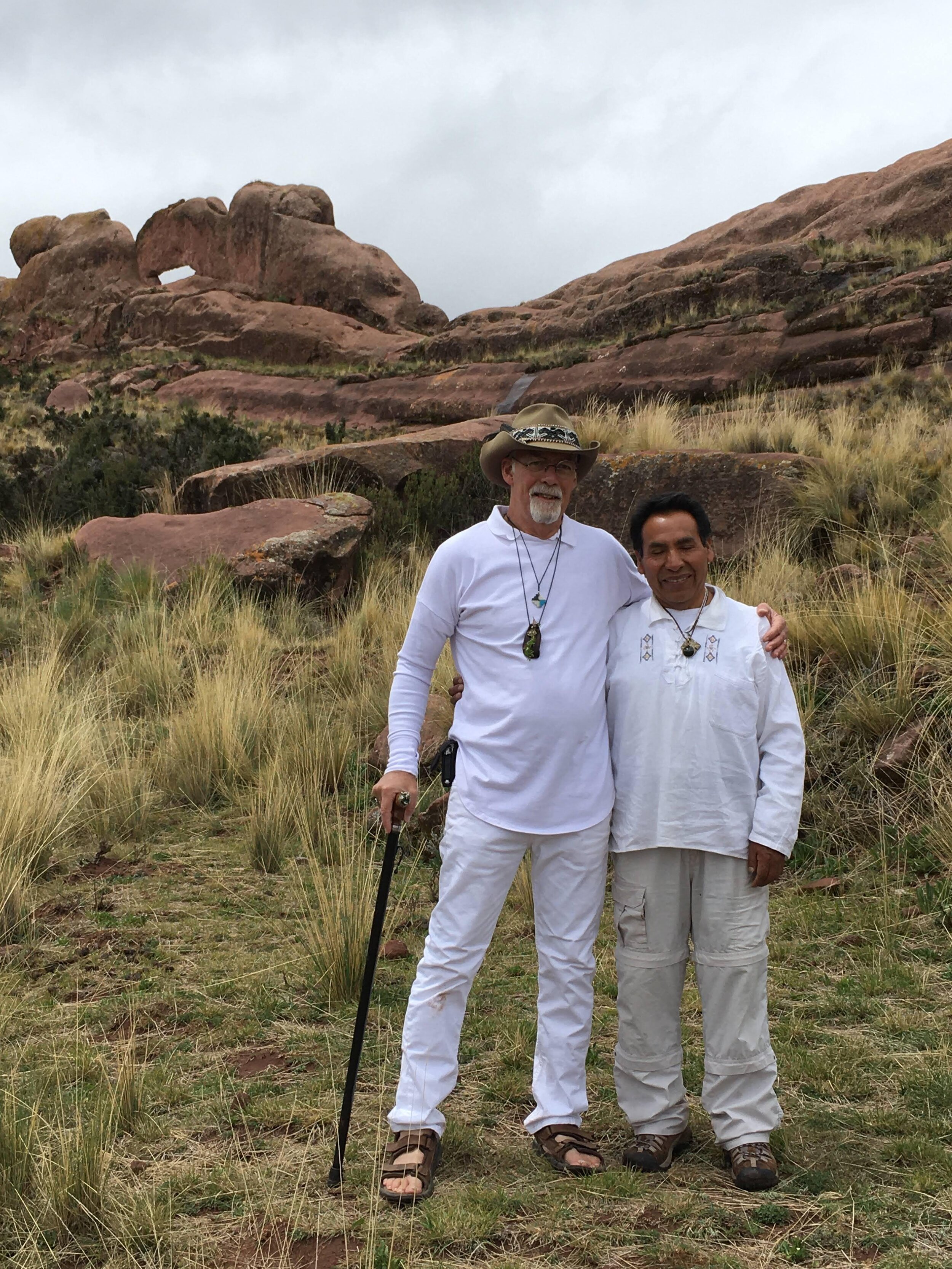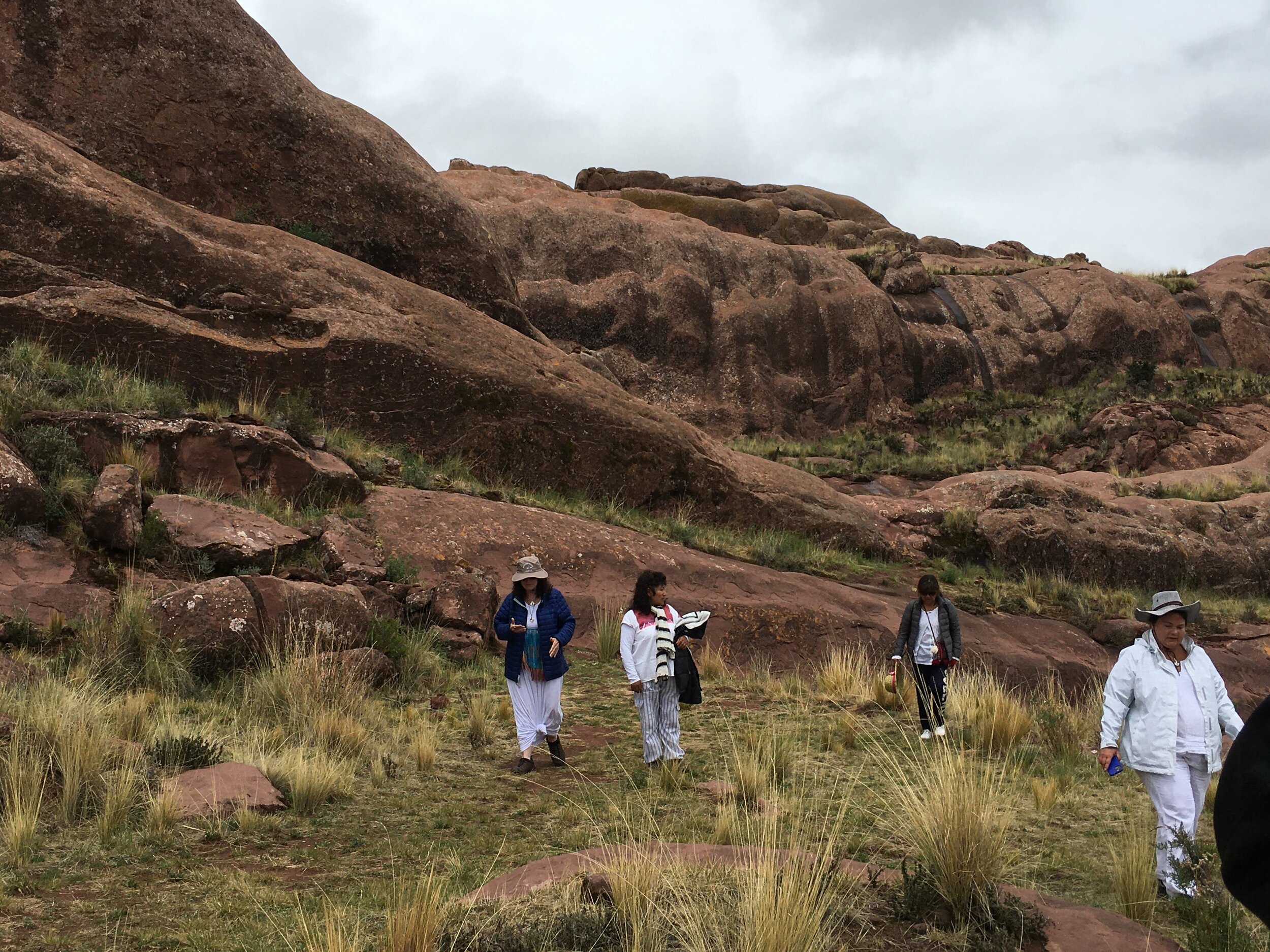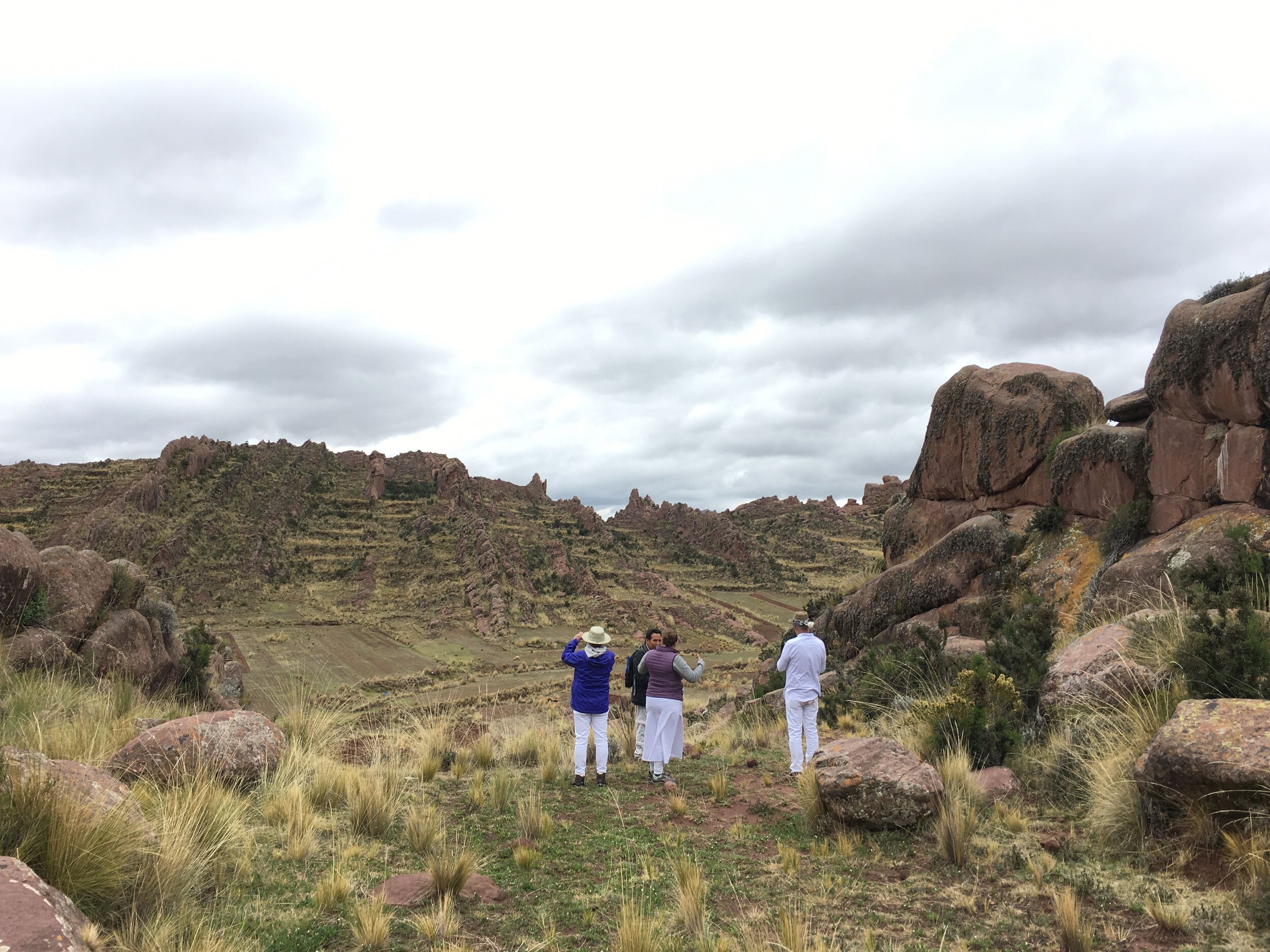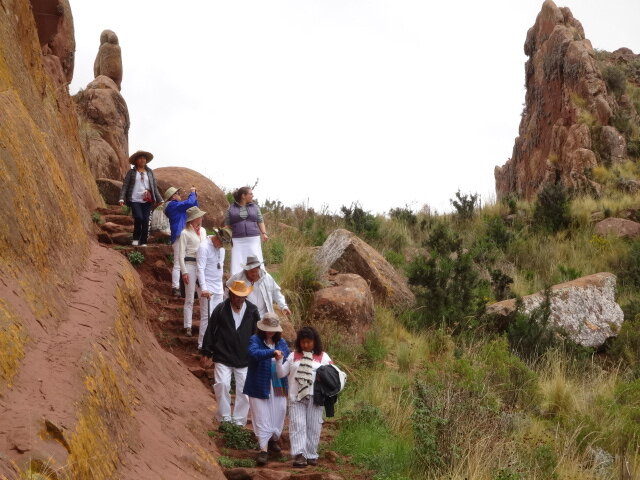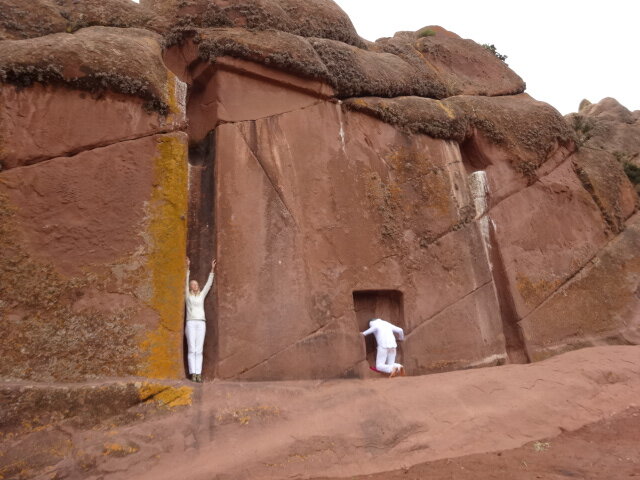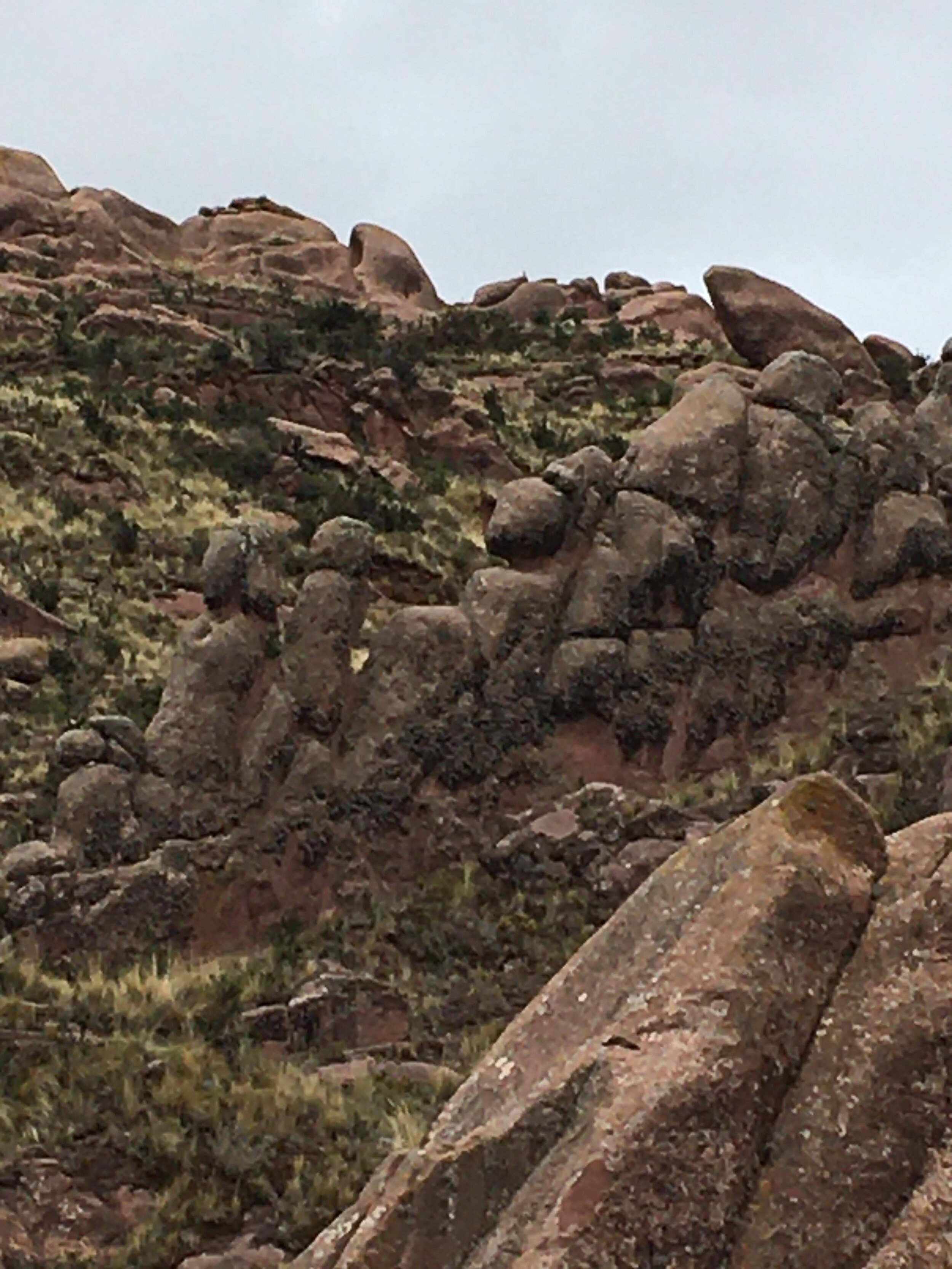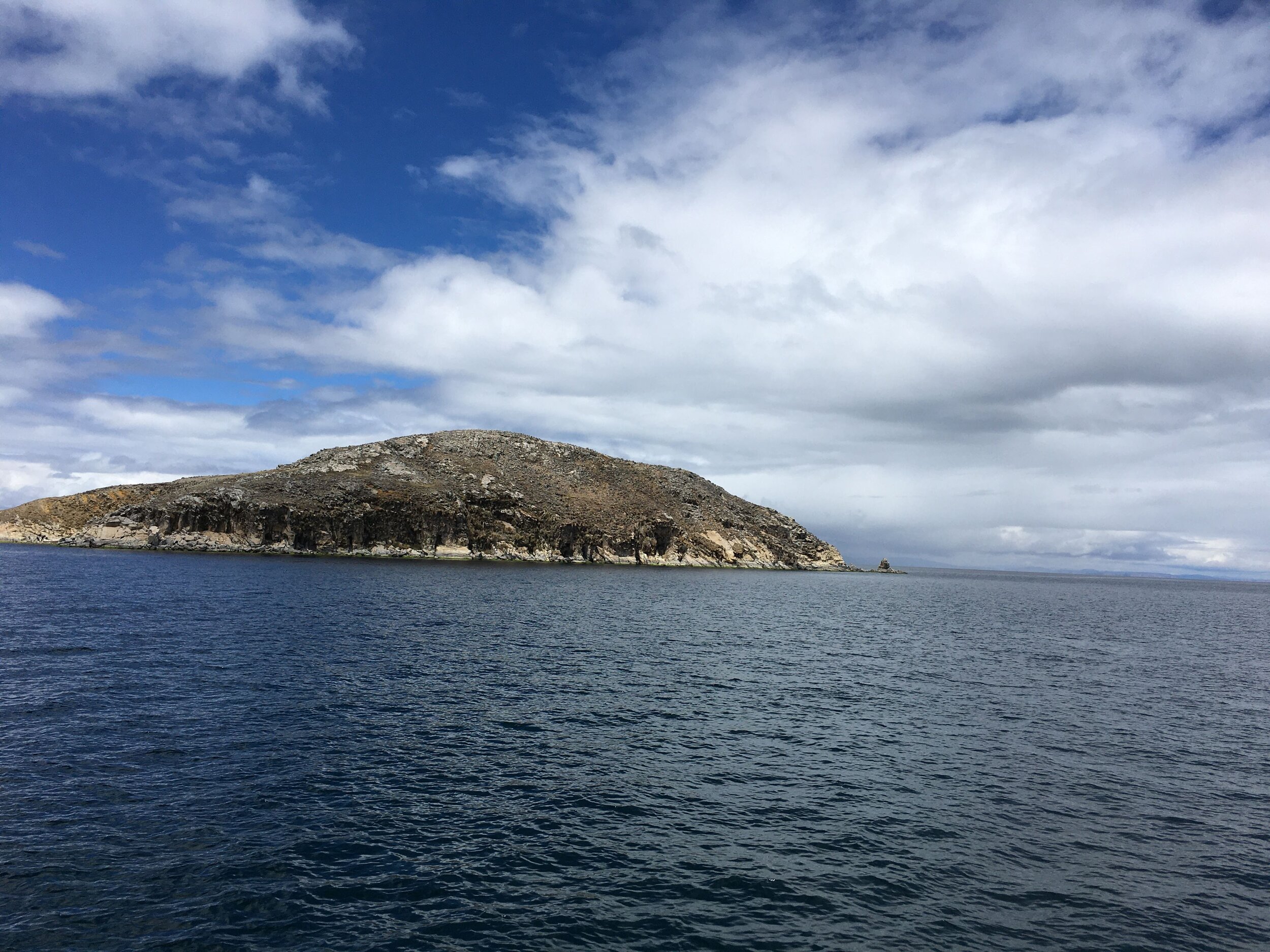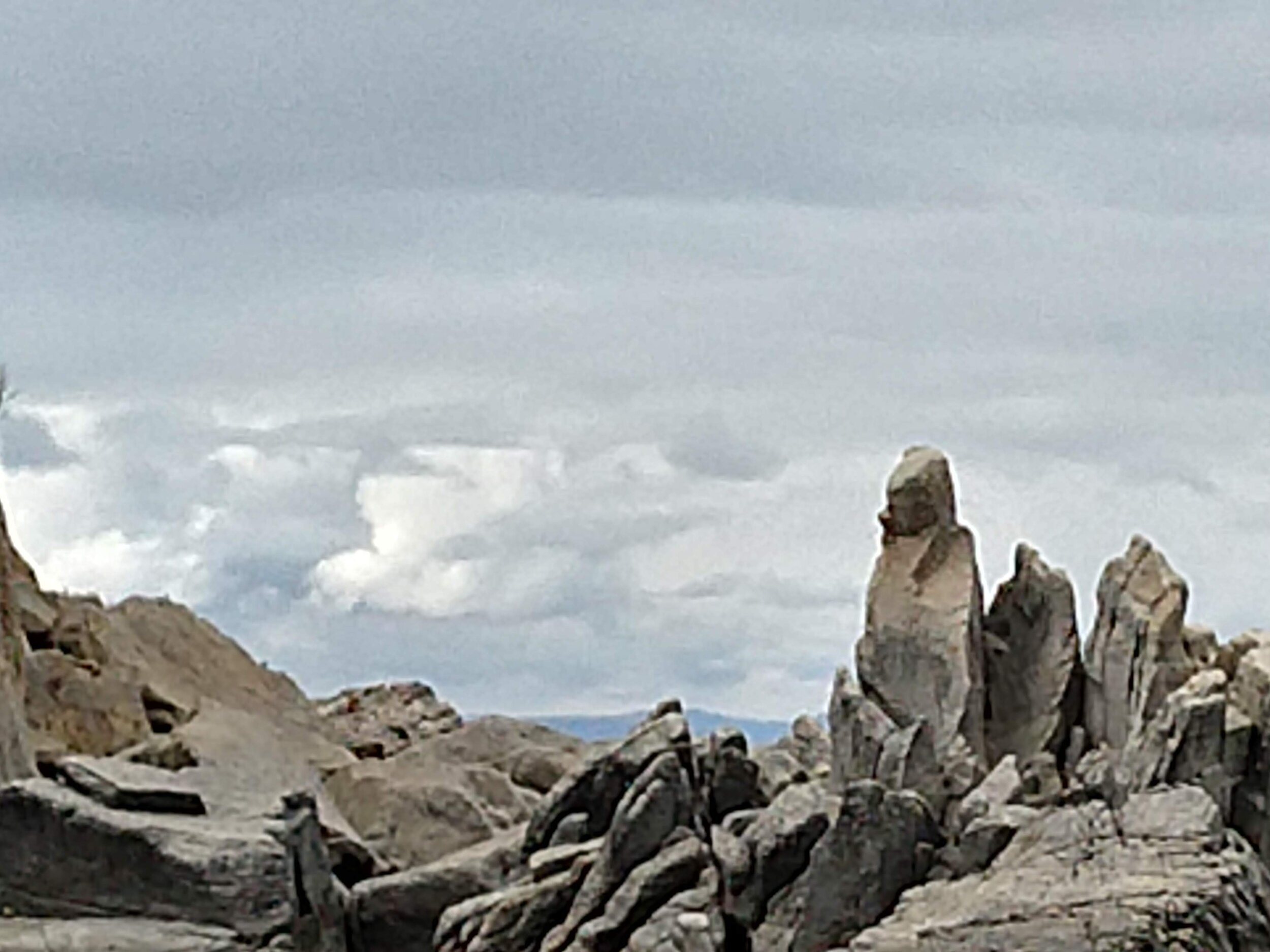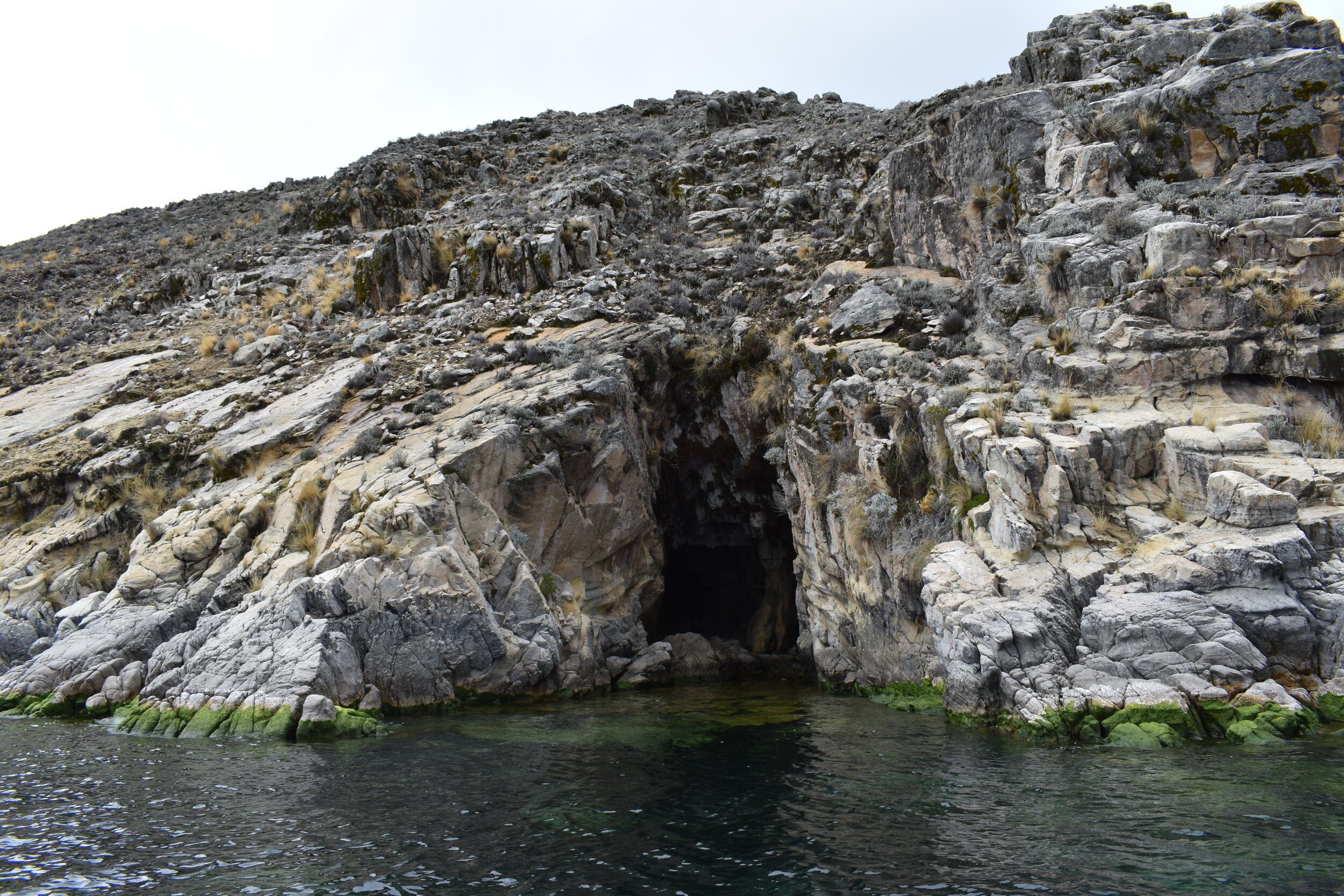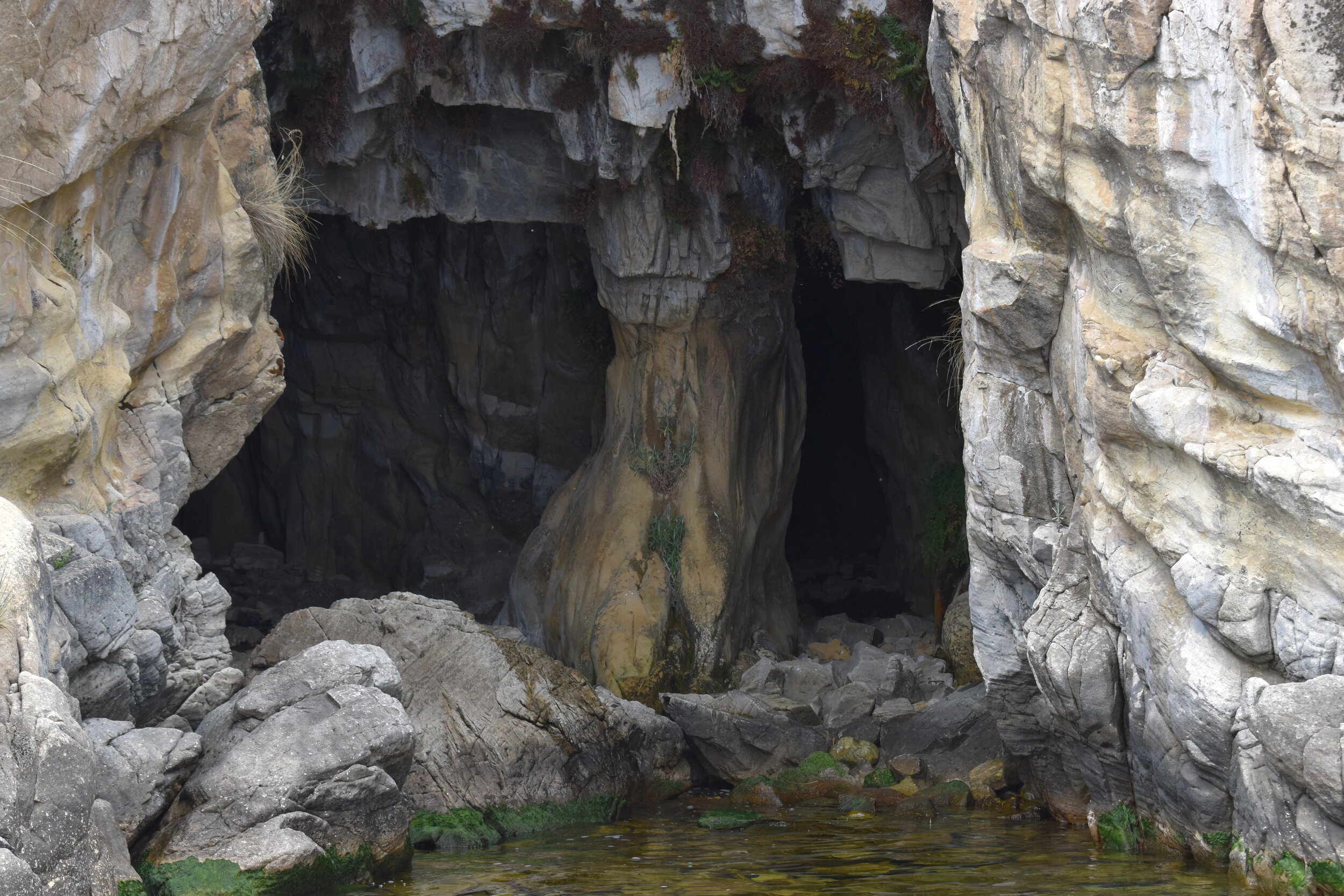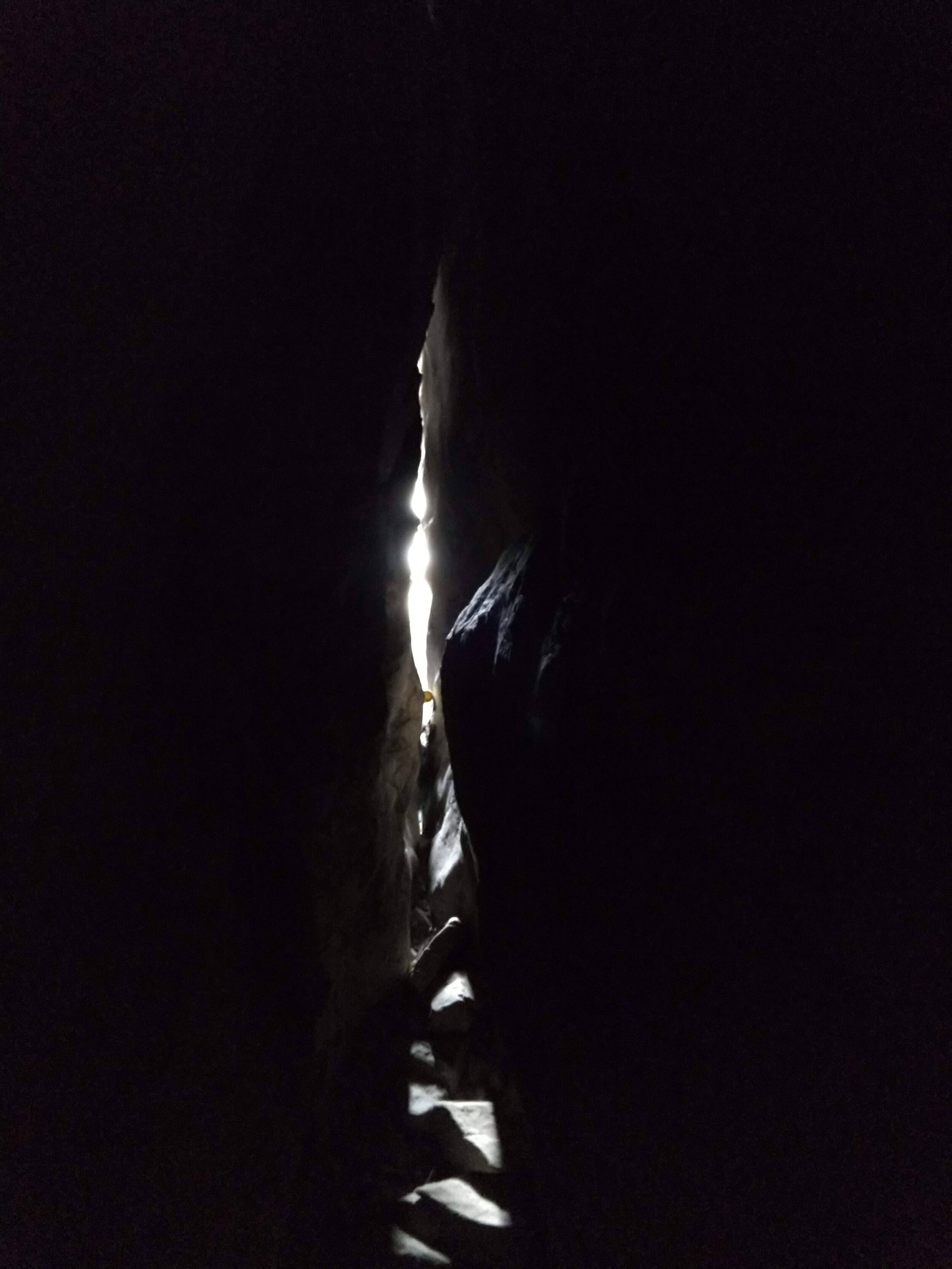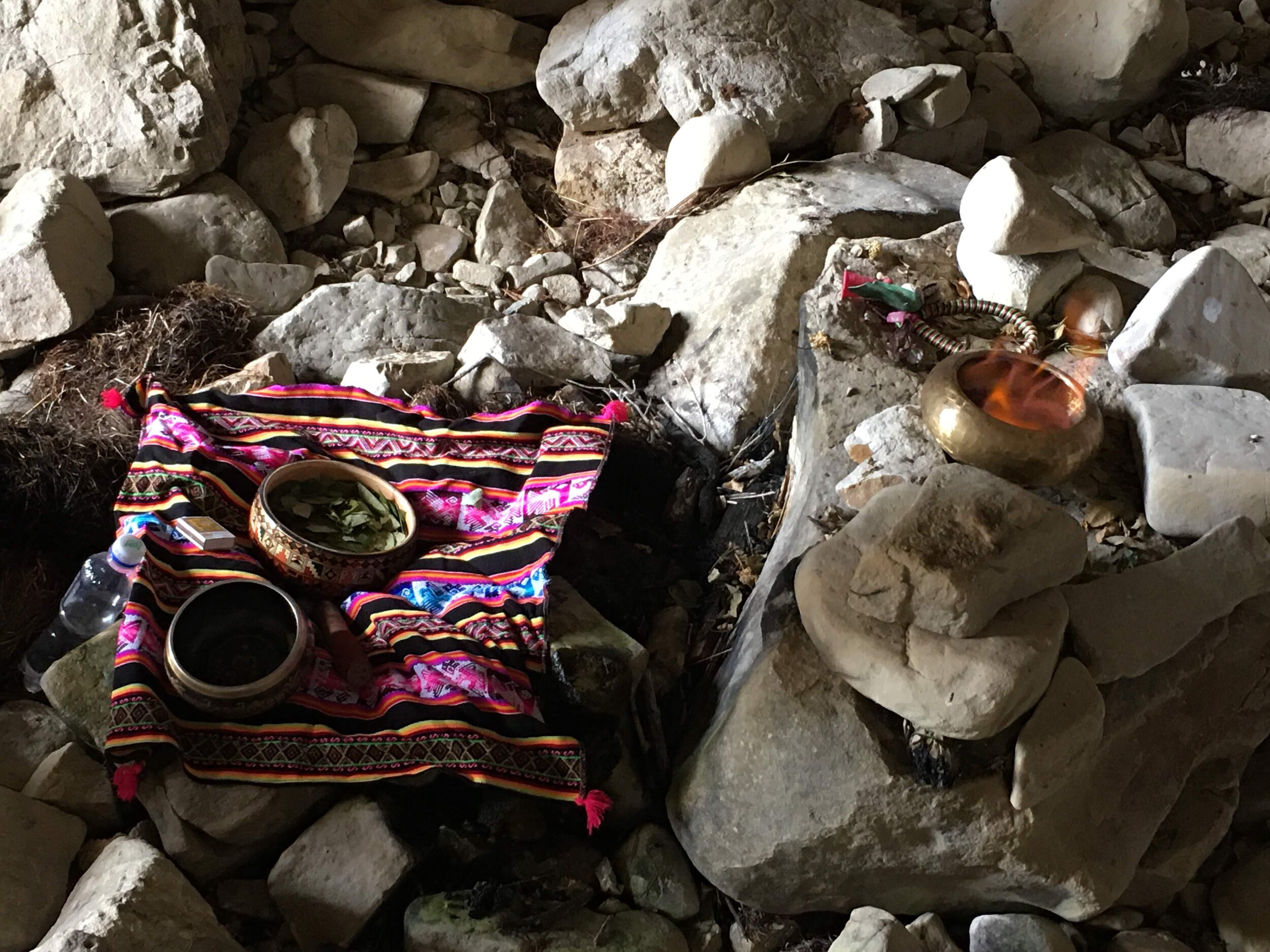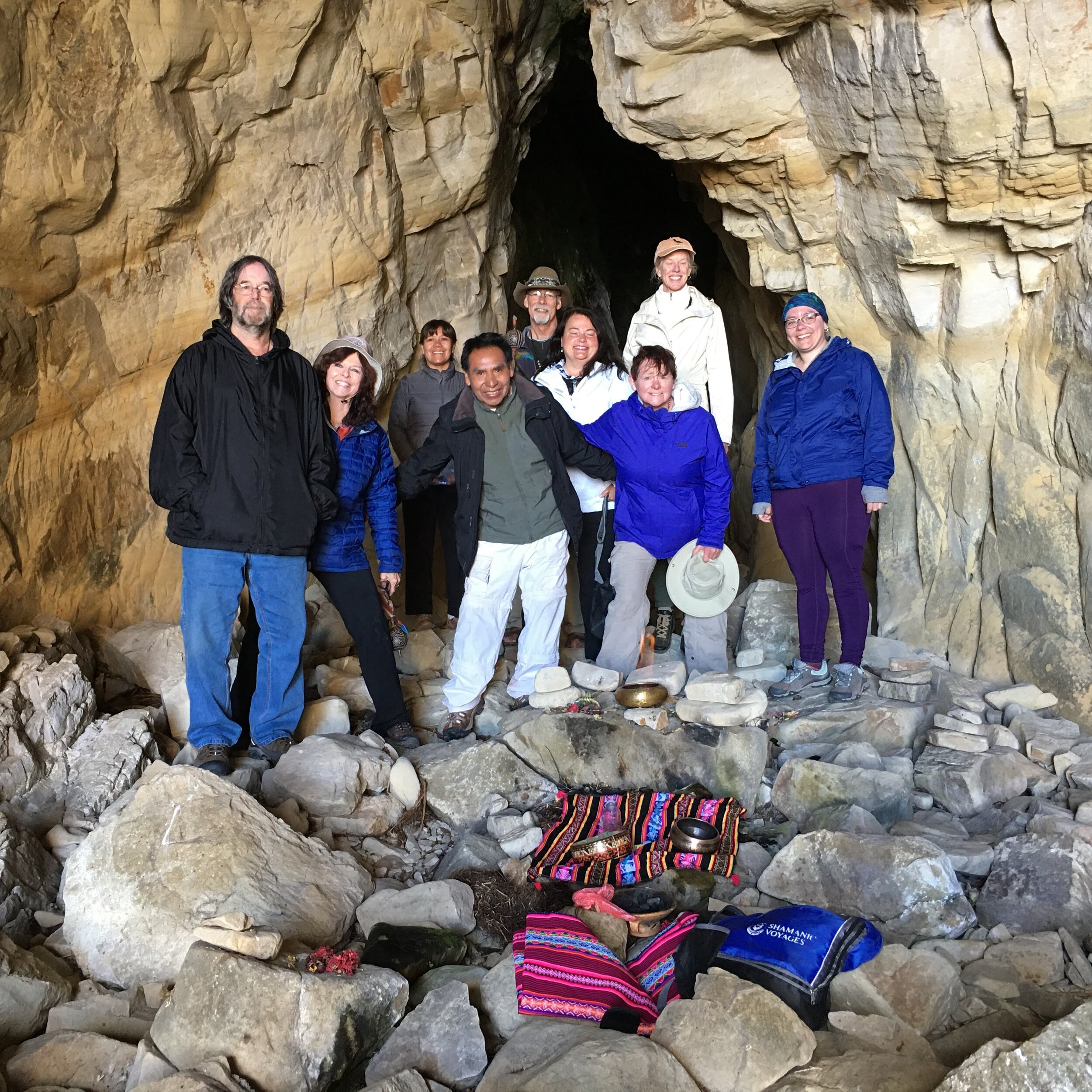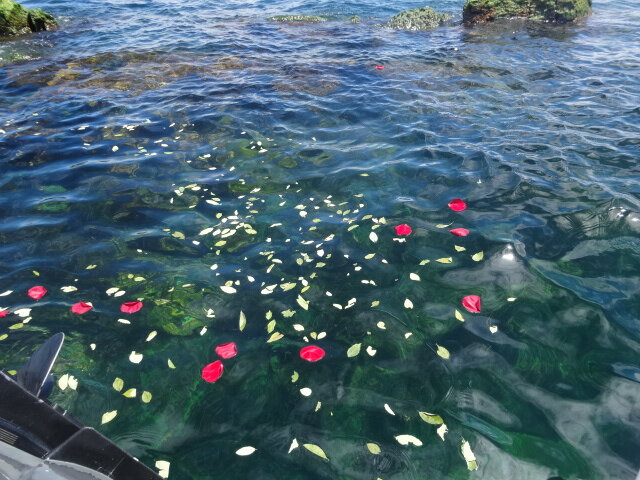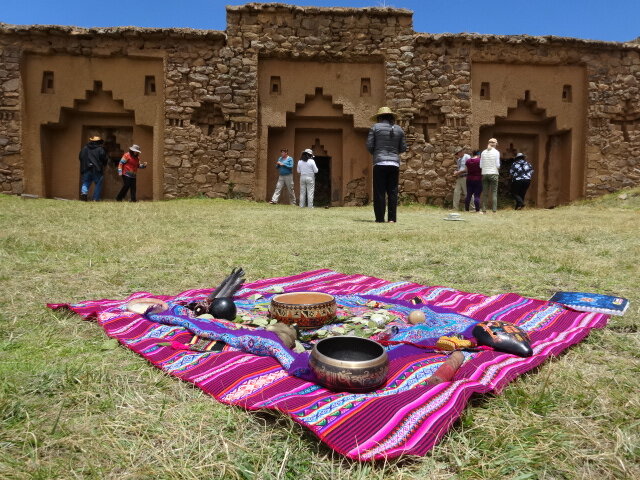The Andes of Peru and Bolivia
November 2nd - November 15th, 2019
In November of 2019, Shamanic Voyages returned to the magnificent Andes Mountains to visit and work with our South American friends and experience the power and deep history of the people of this region. We again began our voyage in Cusco, ancient capitol city of the Inka Empire and arguably still the cultural center of the region. Our friend Don Carlos Anibal Candia Muriel, Altomisayoc, (high lineage healer), and expert on Inka culture, was our host shaman while in the Cusco area. I have grown very fond of Don Carlos and come to admire his extensive knowledge of the history and traditions of this area.
Don Carlos and Crow in ceremony
On 2/November, 2019 we arrived at the International Airport in Lima, Peru. We greeted one another, many for the first time, then departed Lima for Cusco. After a short flight, we landed at the Cusco airport where we met our interpreter, guide and dear friend, Lilia Paz Astete. Lilia accompanied us throughout our time in the Cusco area. We spent our first day adjusting to the altitude and relaxing while we strolled the main square and enjoyed our first taste of Peruvian Cuisine.
Lilia Paz Astete, our interpreter, who speaks English, Spanish and Quechua. Our ‘Transformer Extraordinaire’.
Our second day we spent visiting the city and its immediate surroundings, including the Koricancha Temple and the ruins of Q’enqo, Puqa-Puqara, Tambomachay and Sacsayhuaman. The significance of each of these places and their place in Inka history was explained to us by Lilia and Sepharino, another local guide. There was plenty of time to wander and meditate as well.
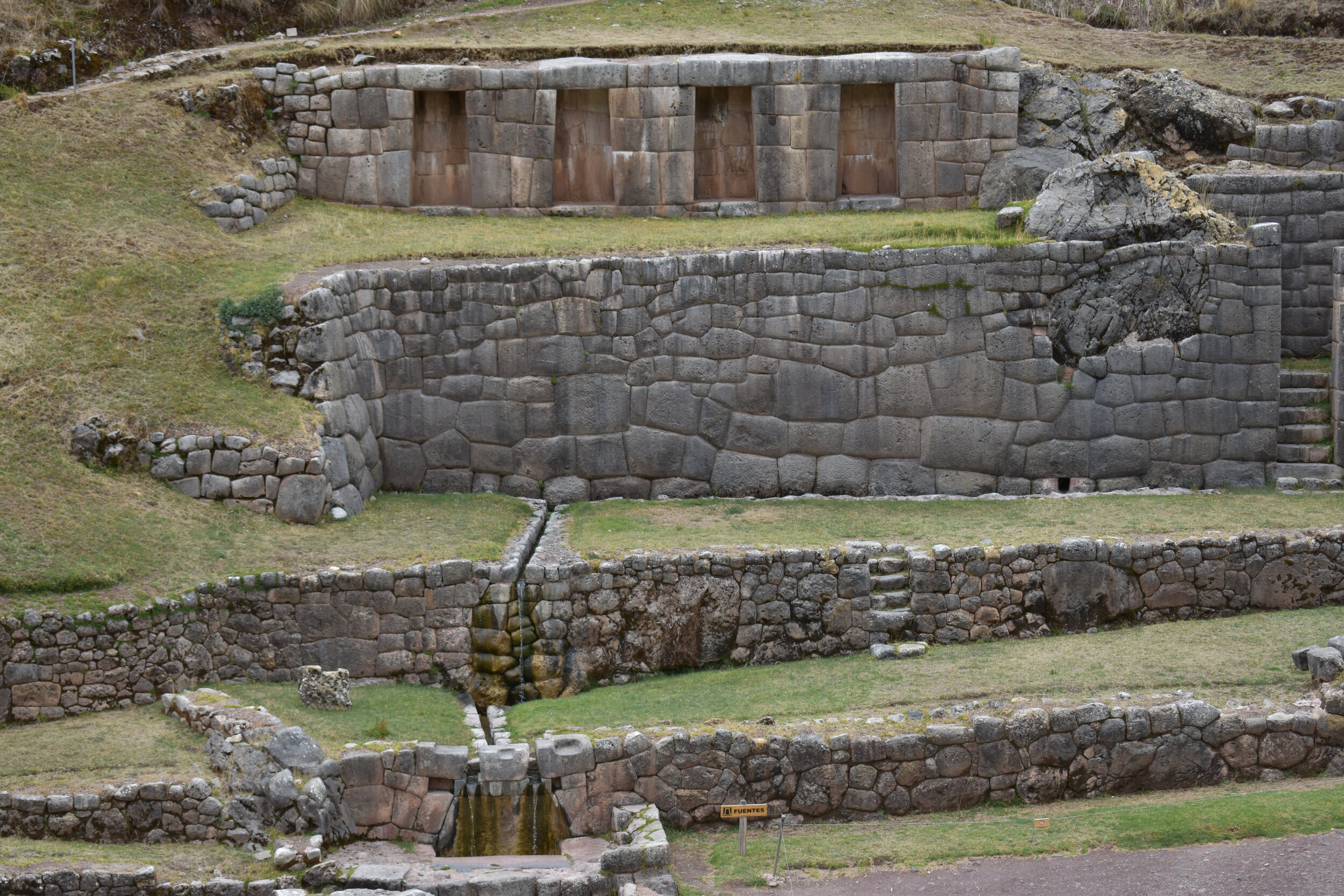
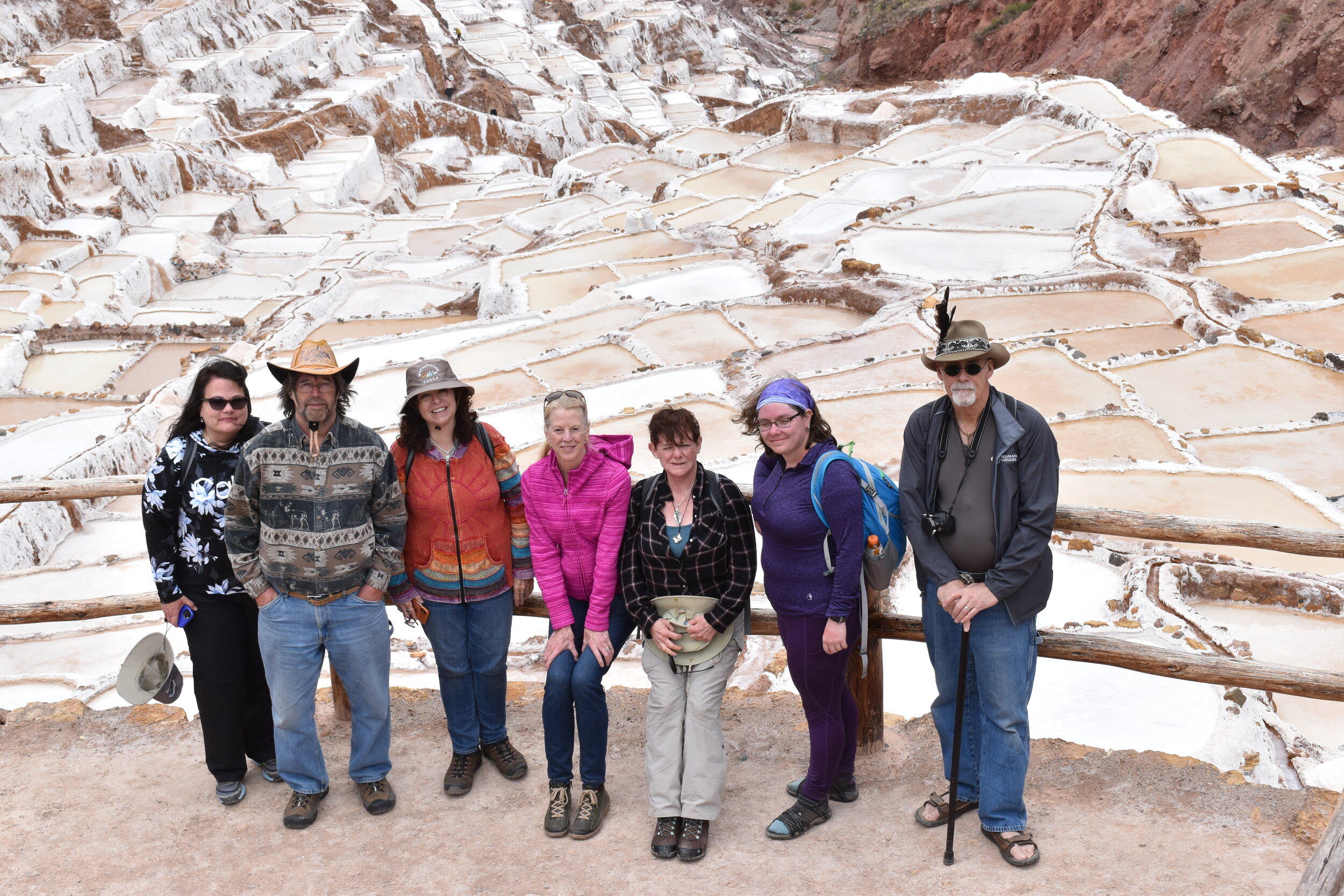
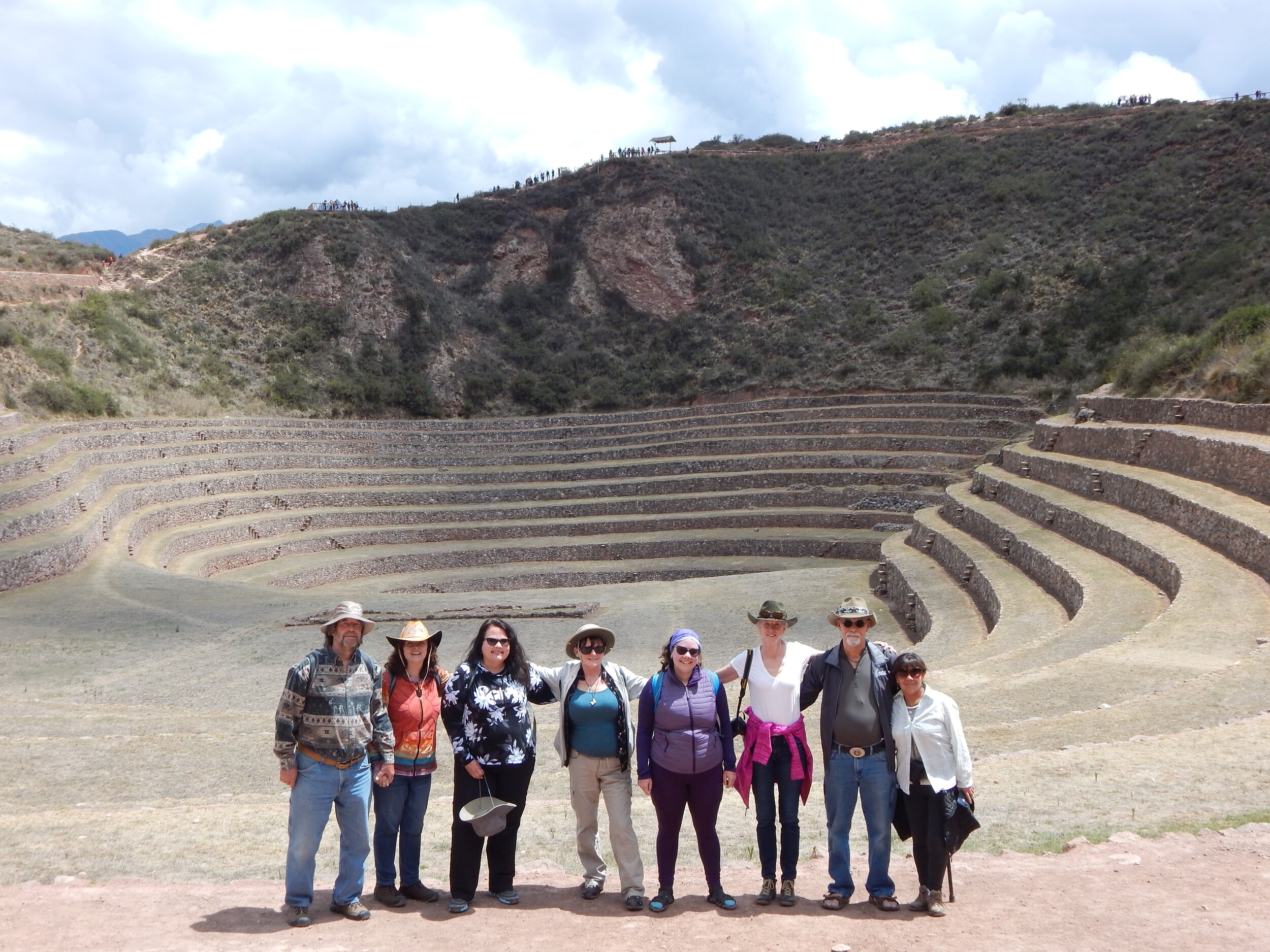


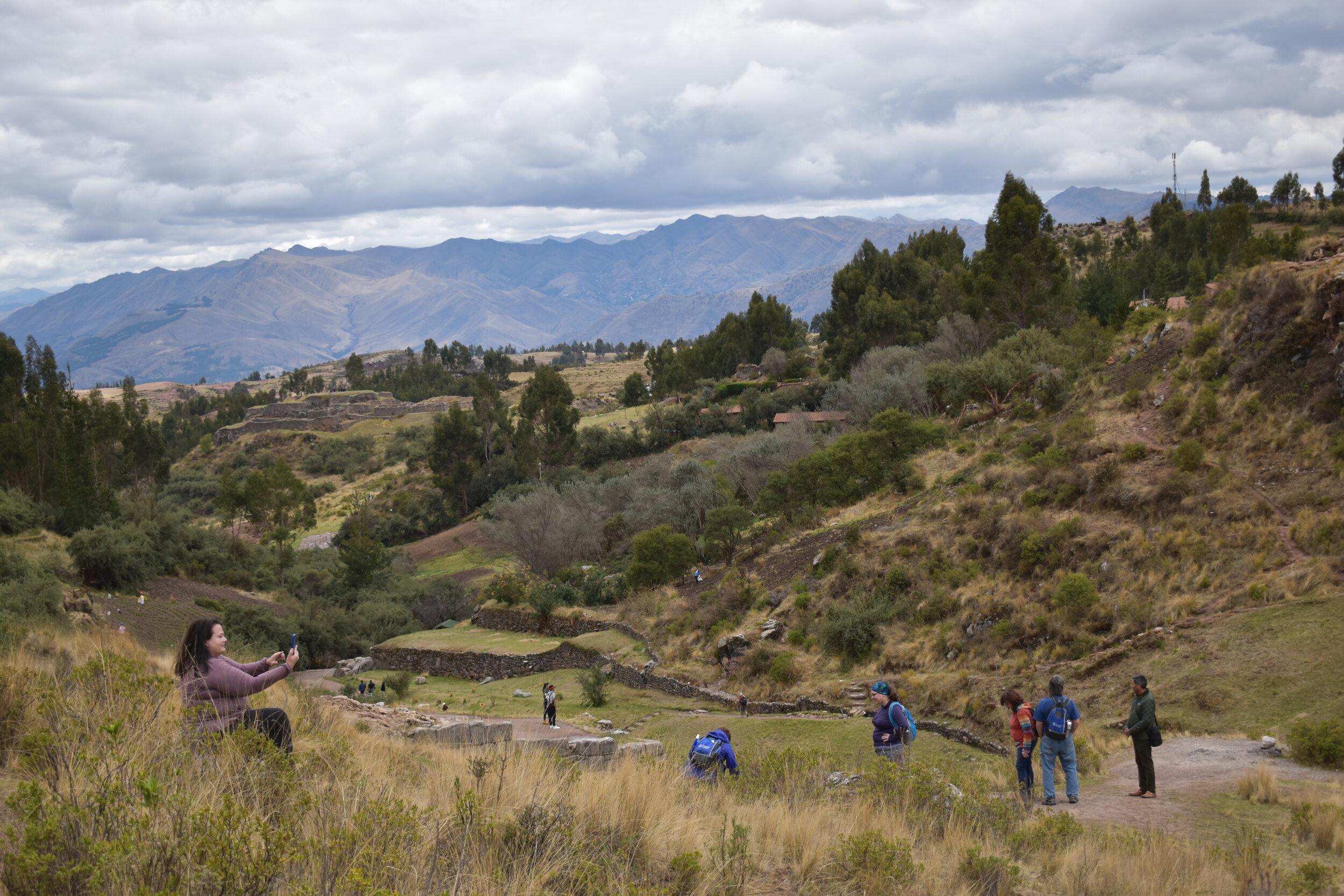
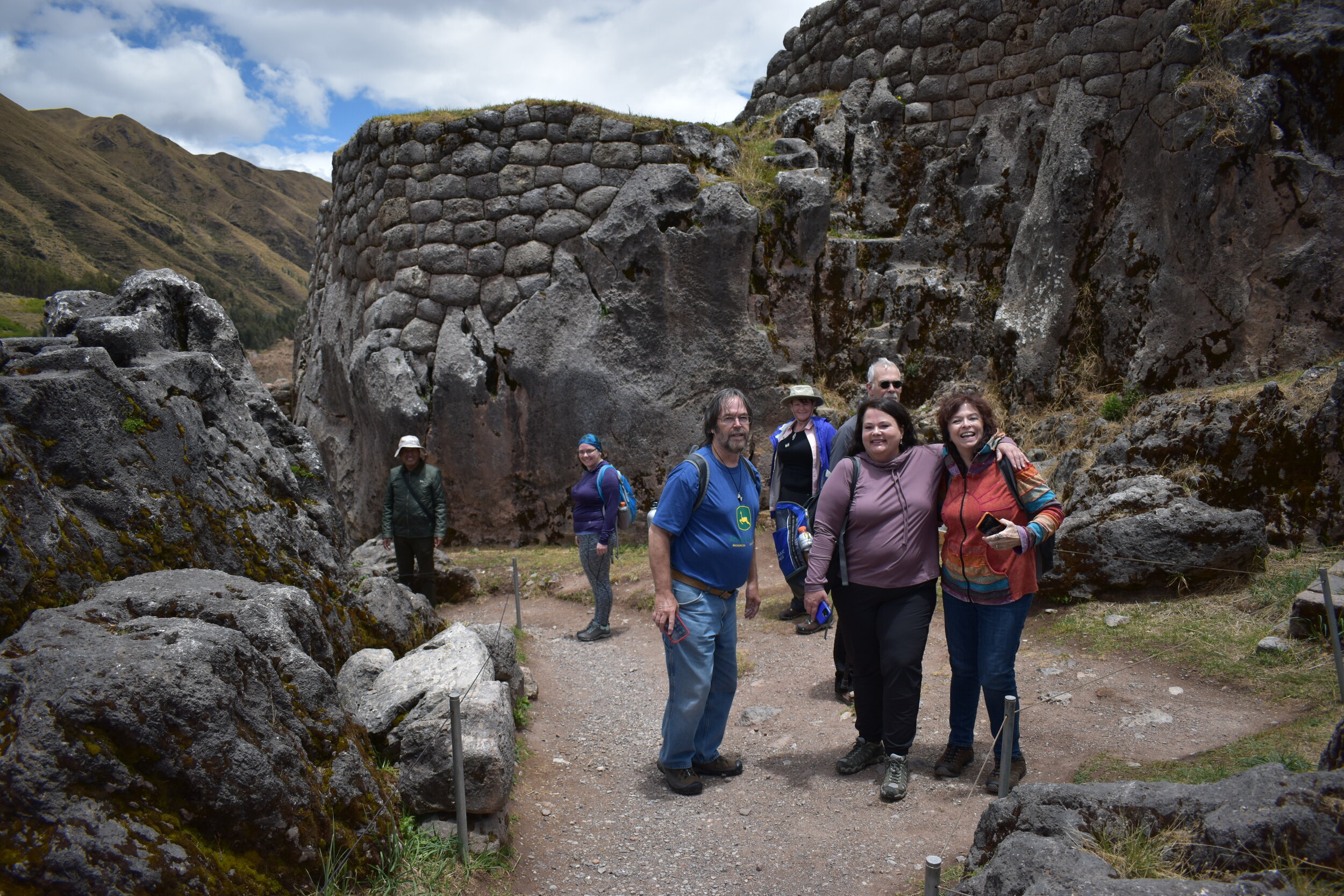
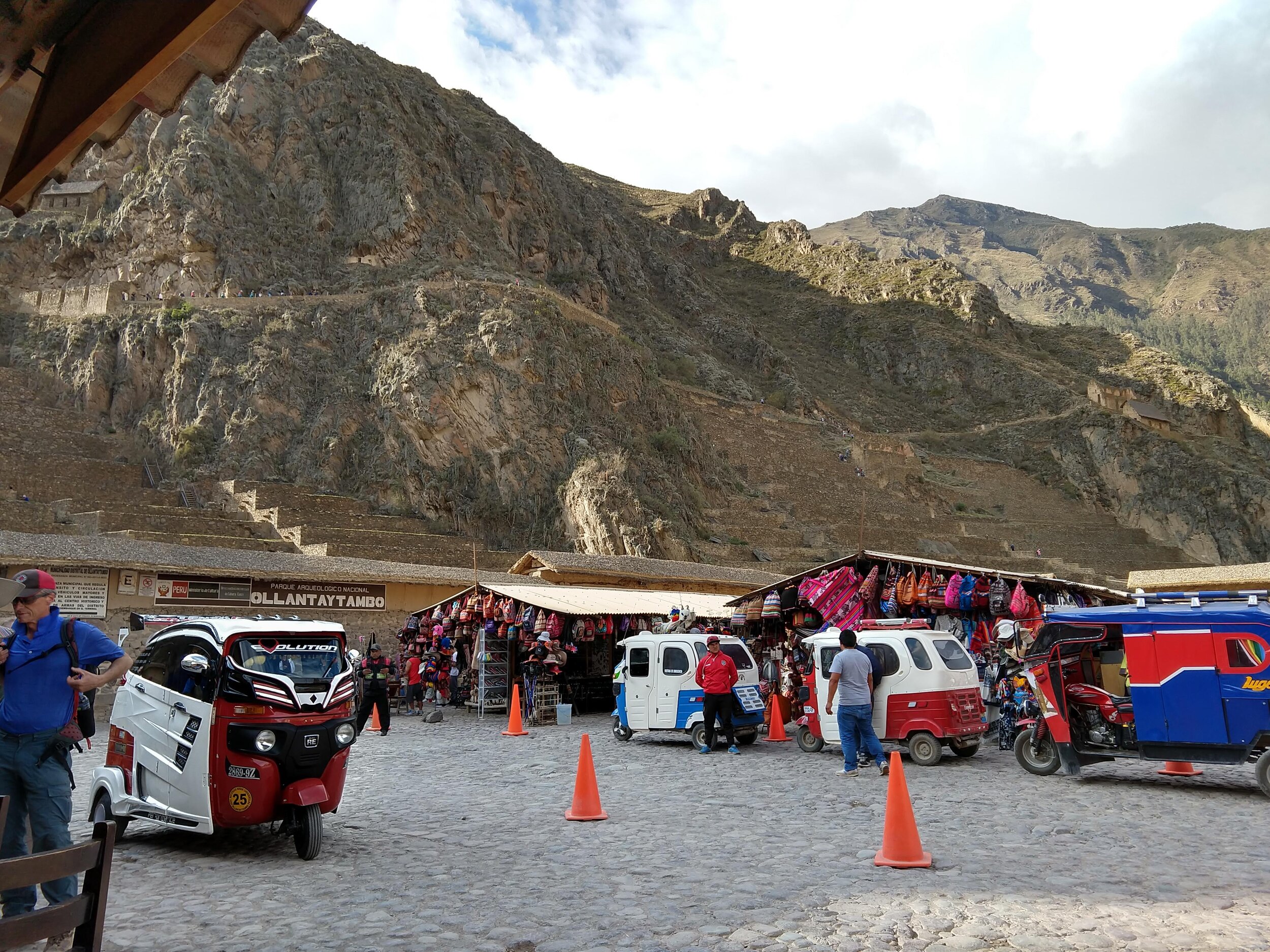

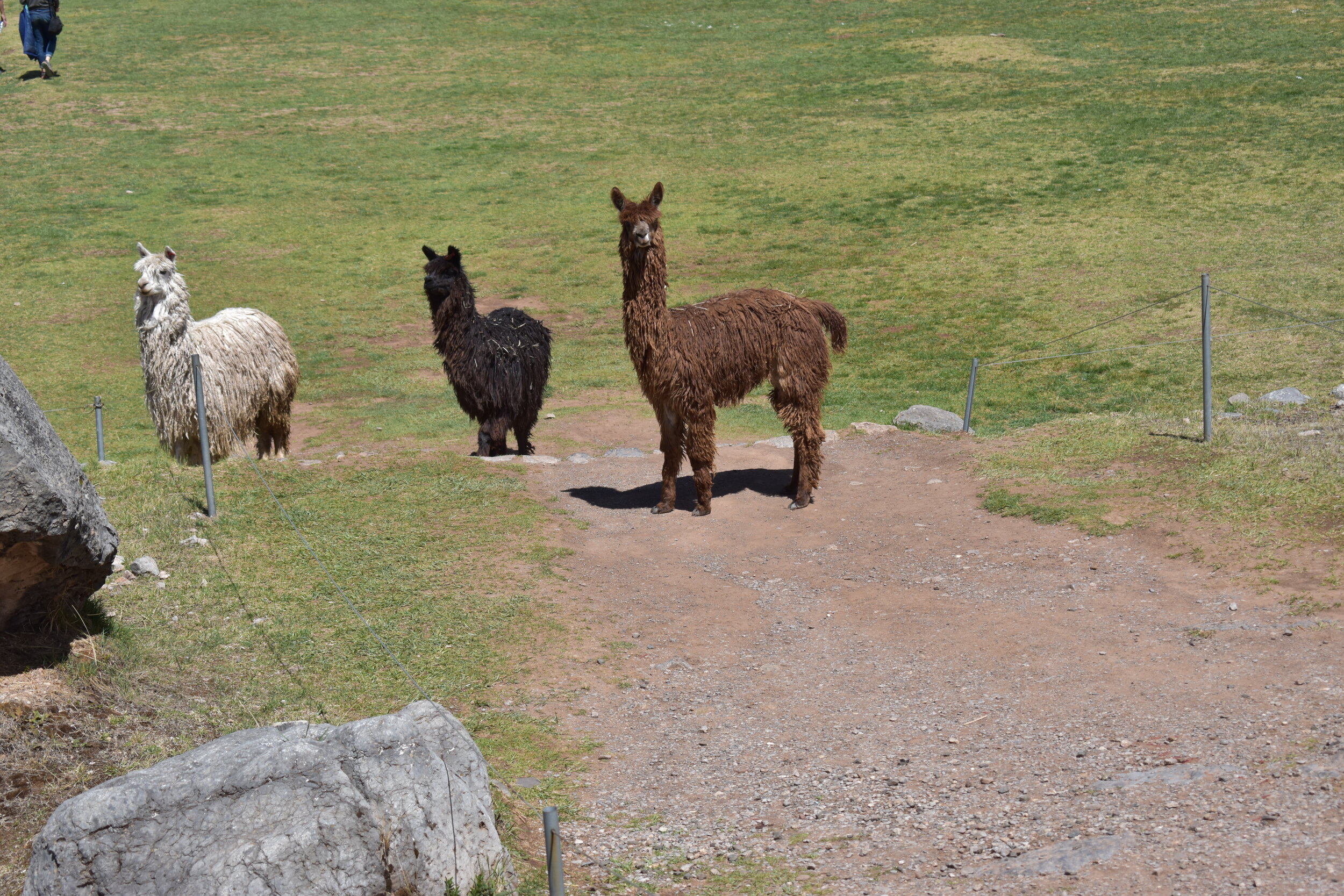
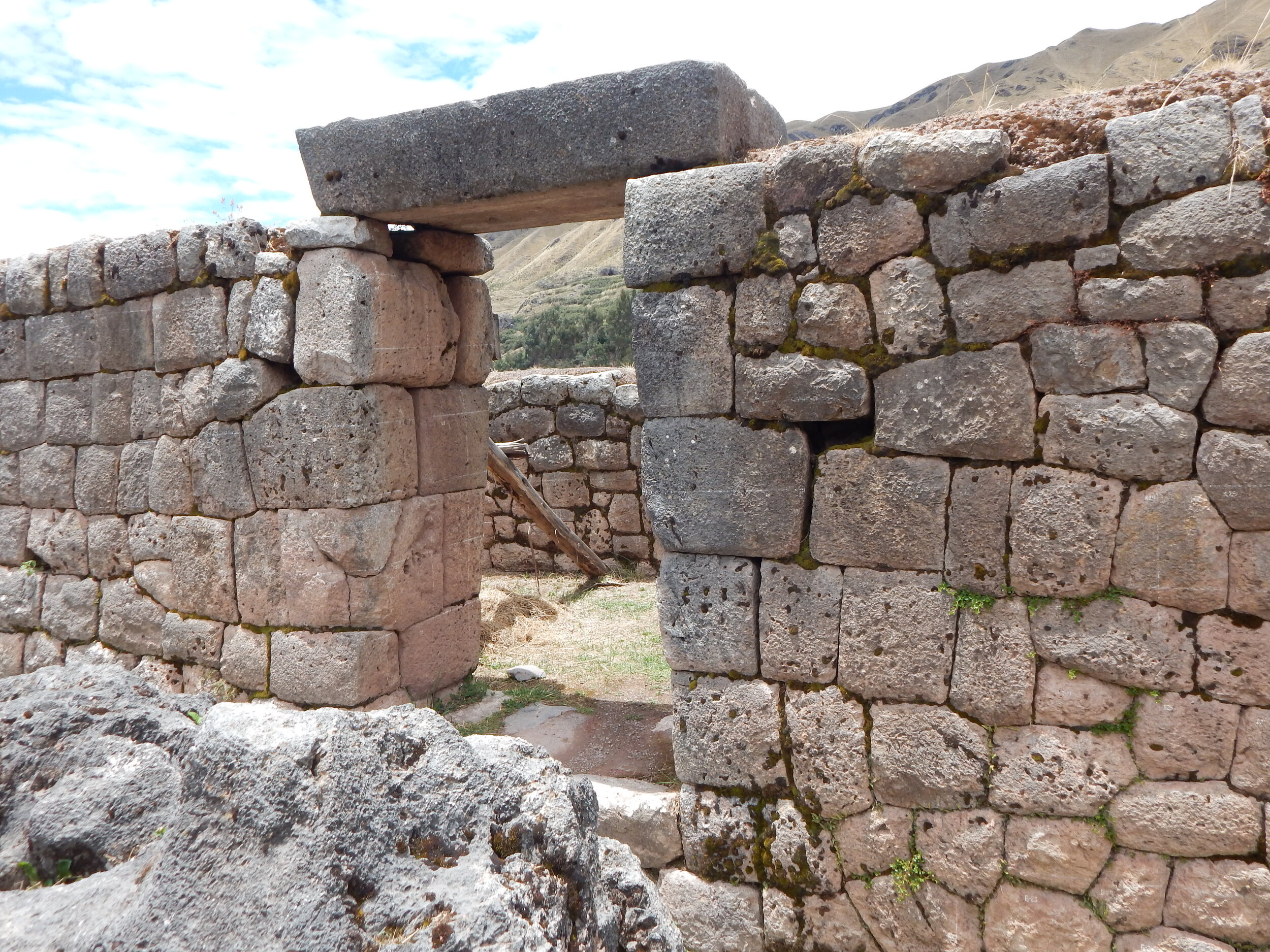
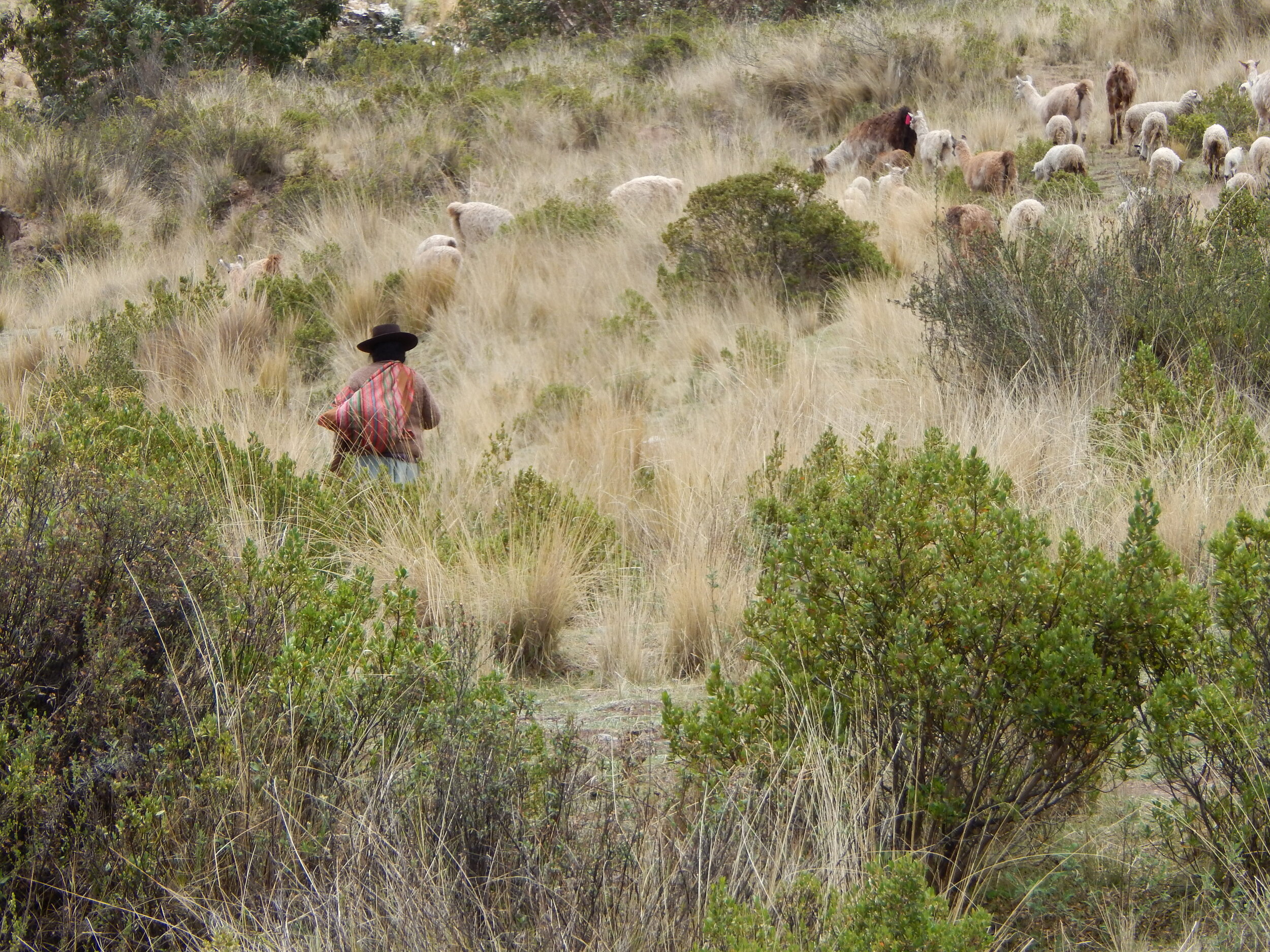

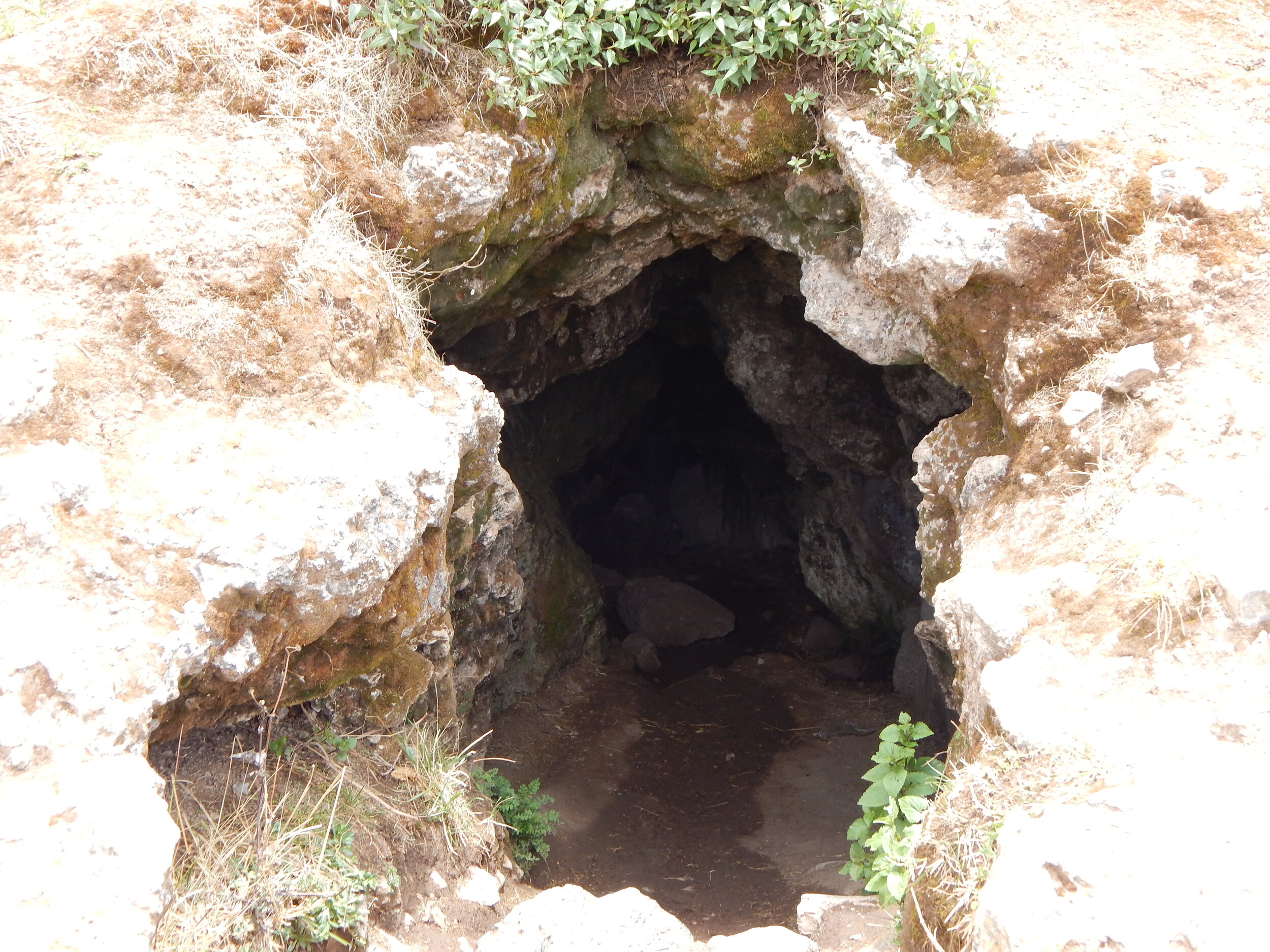
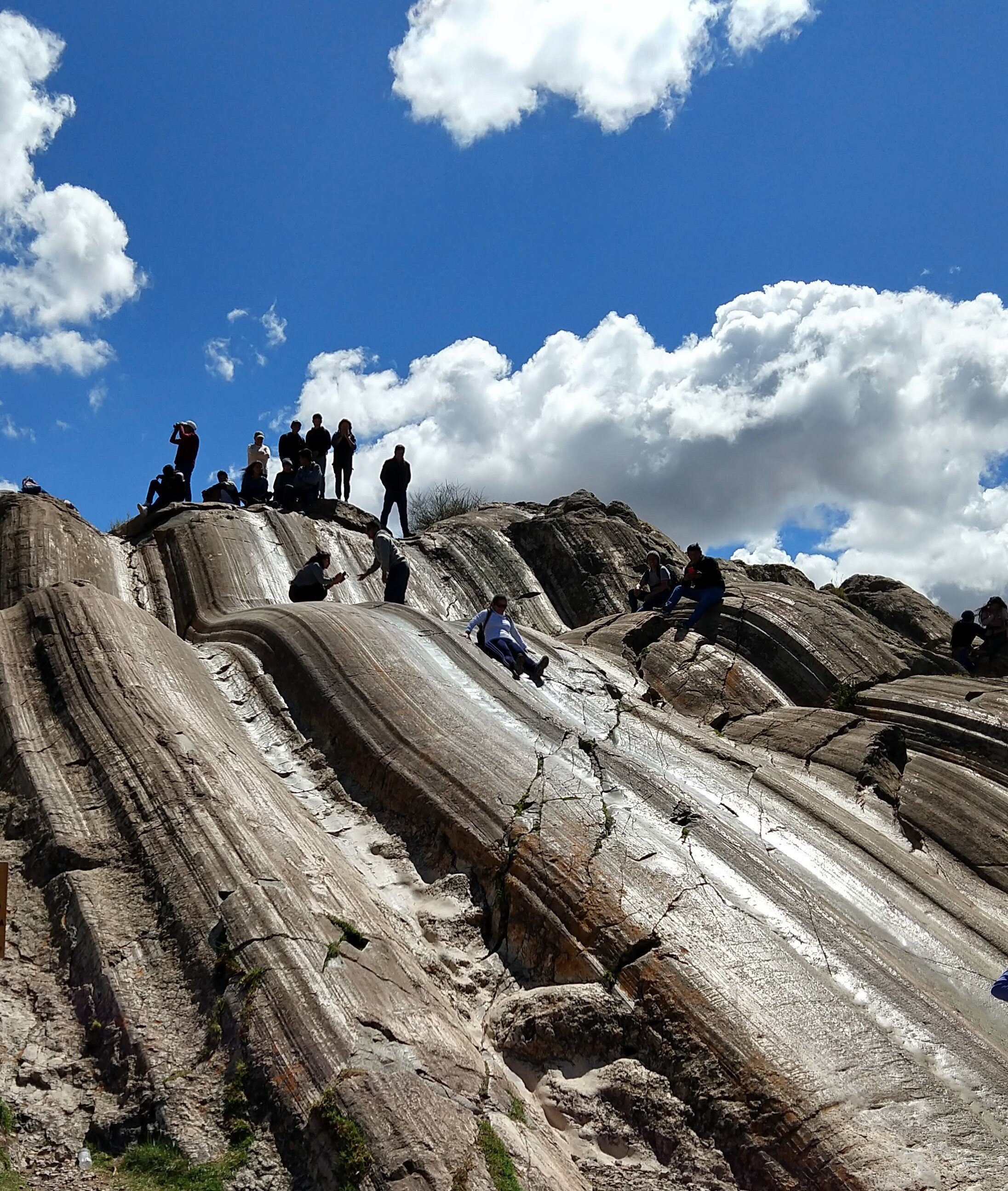
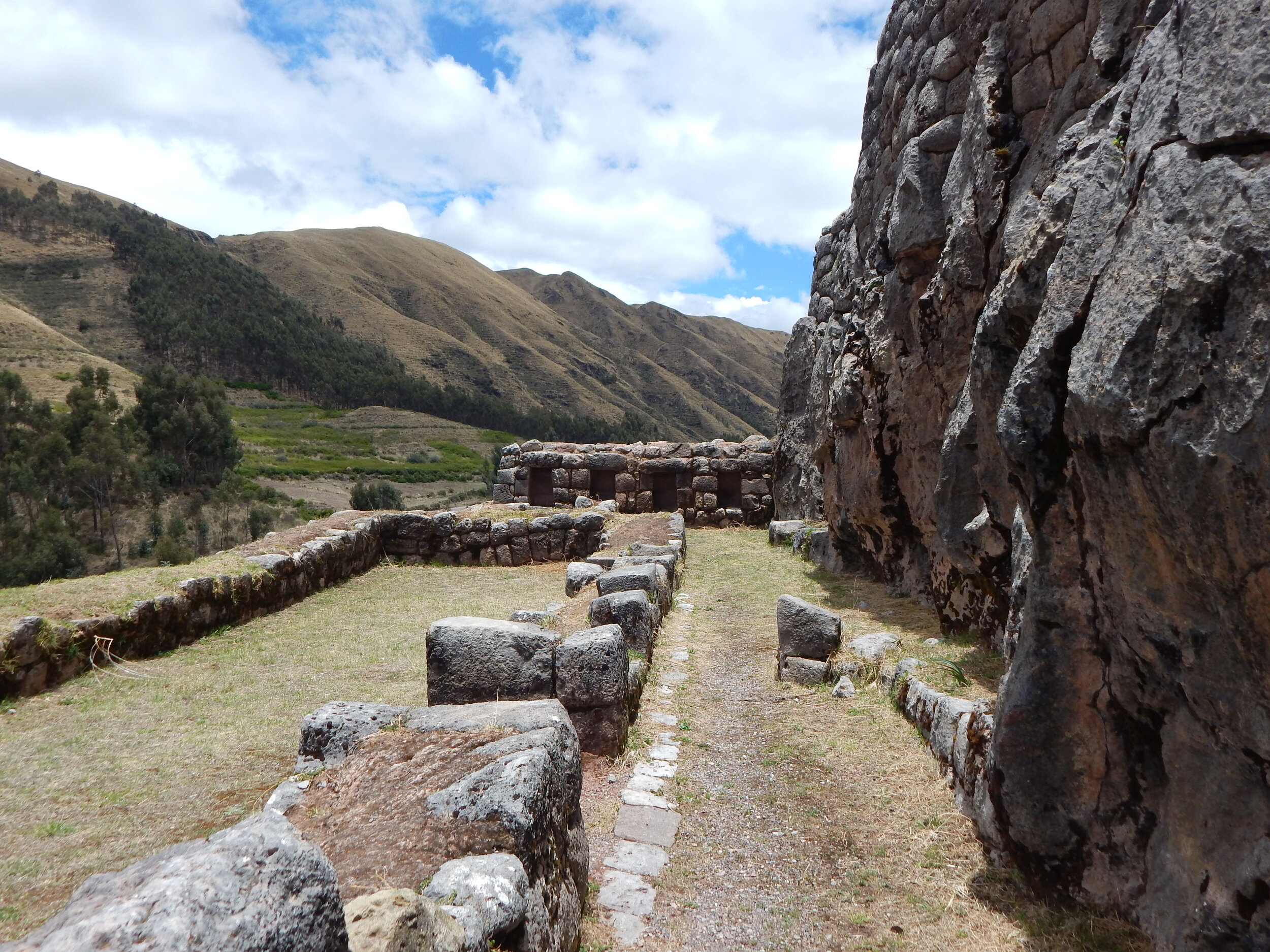
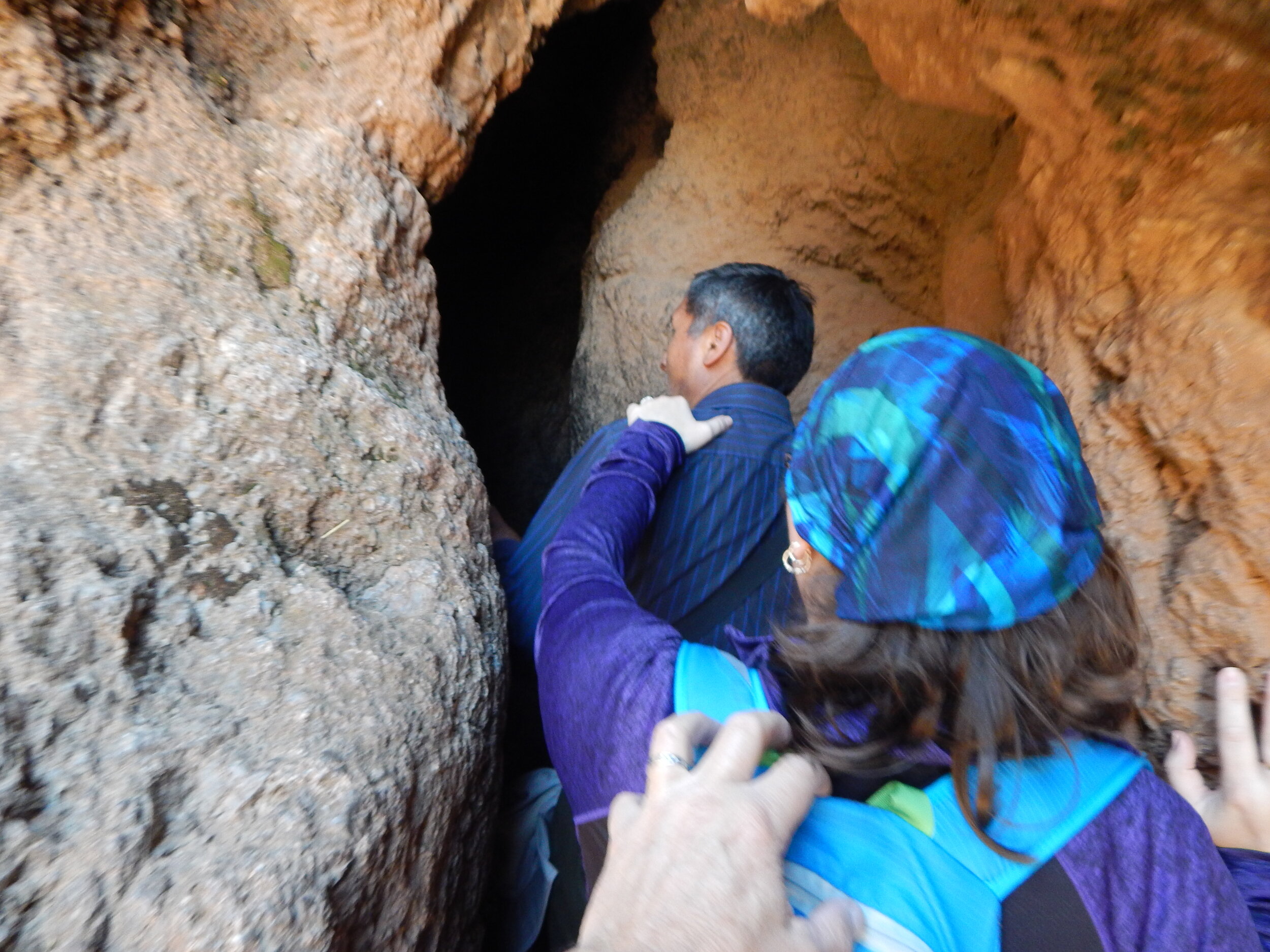
Day three took us on a full day excursion into the Sacred Valley. This time we visited the Maras salt fields that have been cultivated since Inka times and Moray, an archeological site consisting of several enormous circular terraces, known as ‘Andenes’, which are believed to have been outdoor agricultural laboratories of the Inka. We also visited two of our regular stops, Ollantaytambo village and its nearby ruins, which include temples, funerary caves and the fortress where Inka Manco Yupanqui staged his resistance against the Spanish. We finished up our excursion in Pisac, which is home to an extensive artisan market featuring the work of many skilled craftspeople as well as an enormous amount of kitsch. We arrived late in the day, so we ended up spending most of our time at Carlos Felipe Escobar Alverez’ Shaman Shop, where we found some great supplies.
On our fourth day, we left Cusco for a couple of days to visit the village of Patabamba. This journey took us to an elevation of just over 4,000 m above sea level, (13,000 ft), the highest extended stay of our trip. Patabamba is situated well above Pisac, earning itself the nickname, ‘Balcony of the Sacred Valley’, and the view from the edge of the village is nothing less than breathtaking!

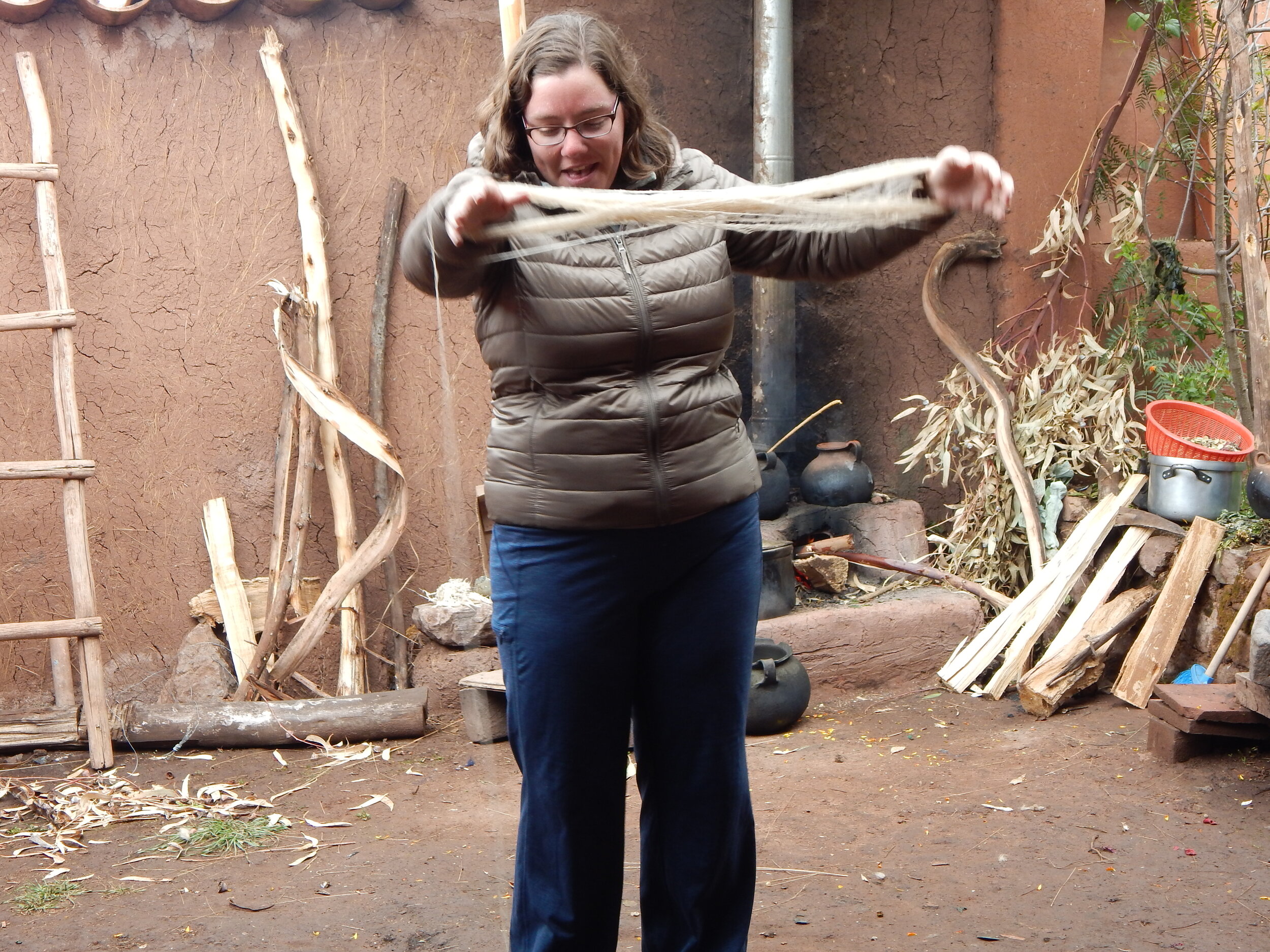
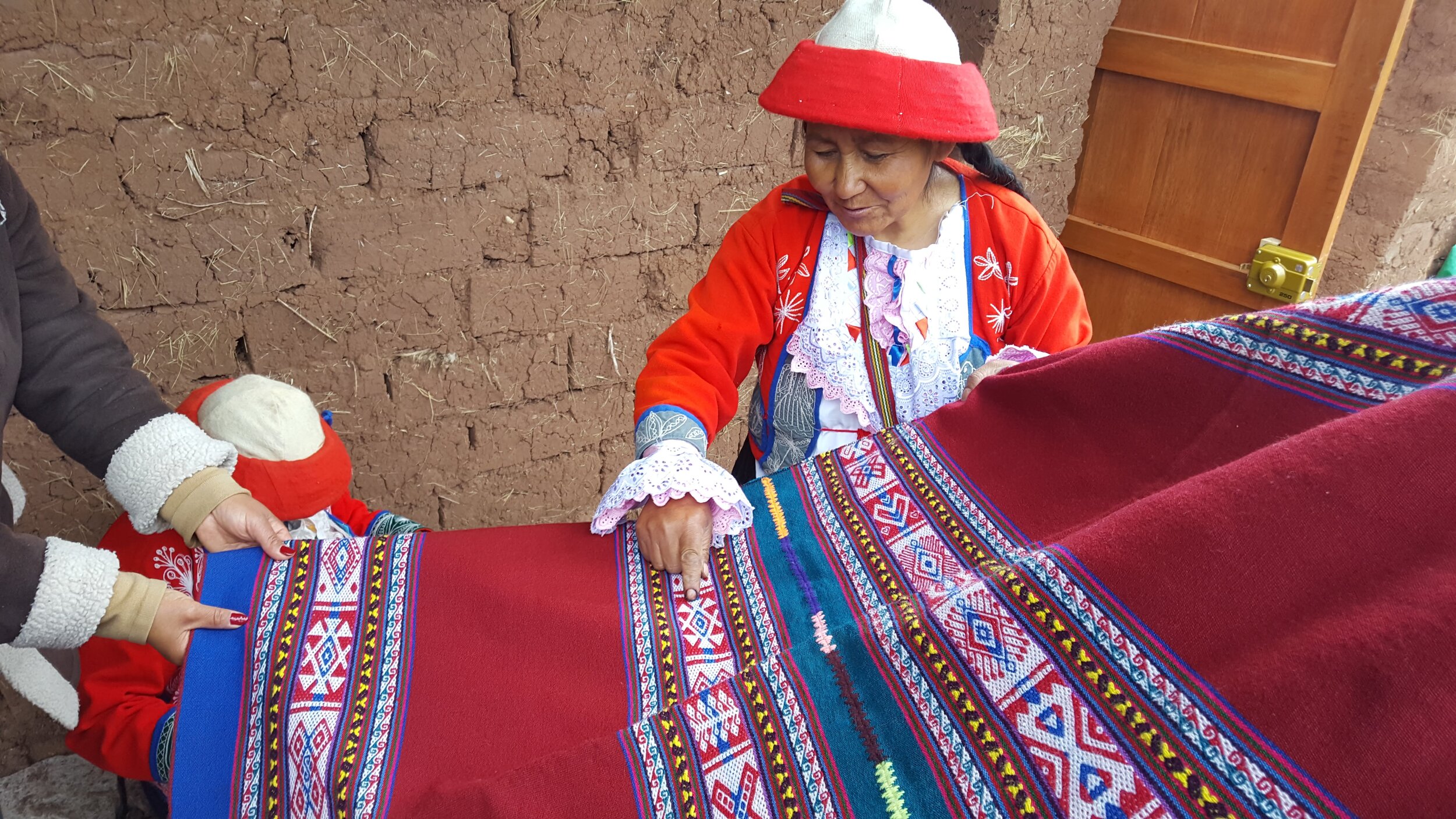
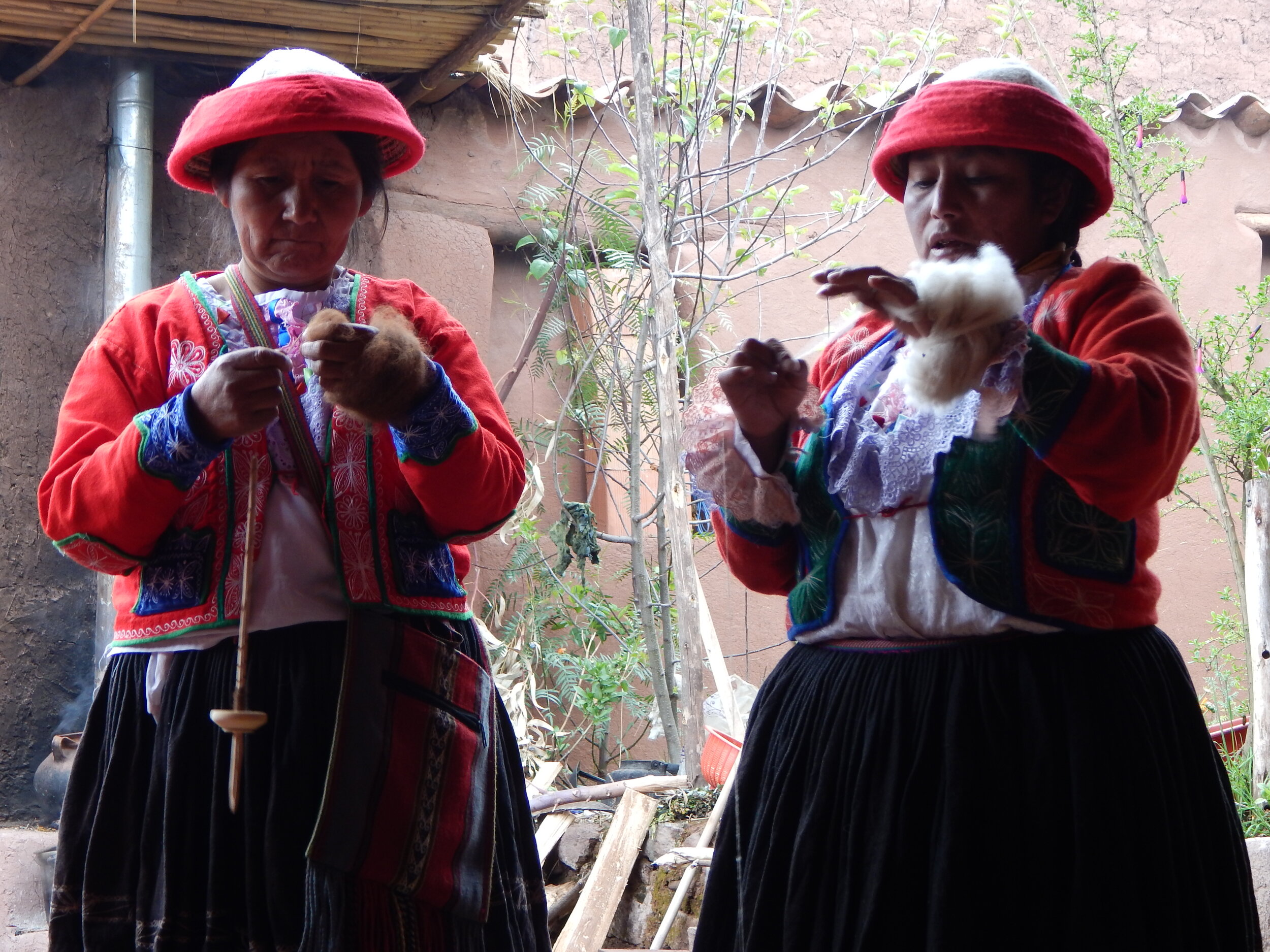

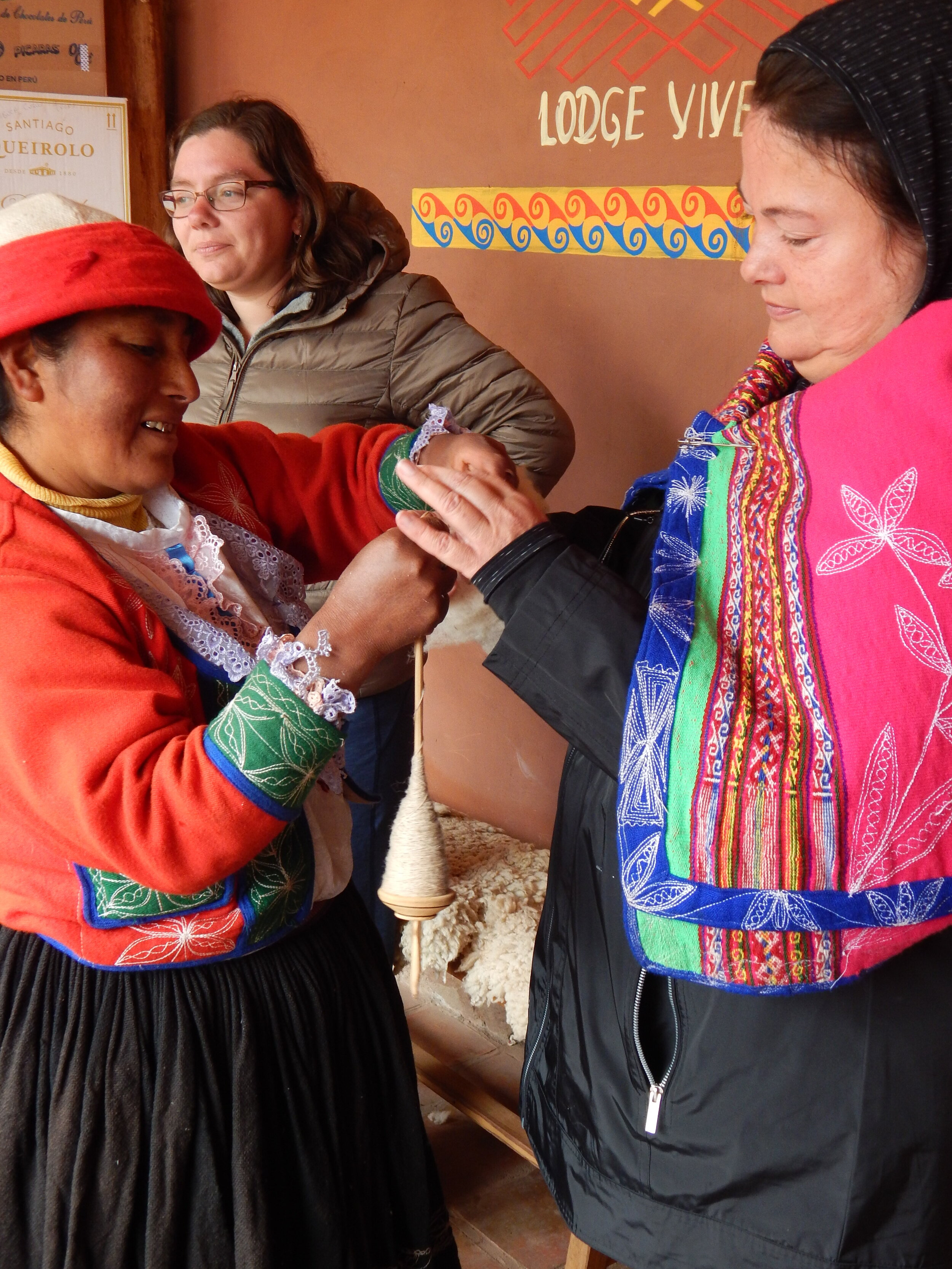
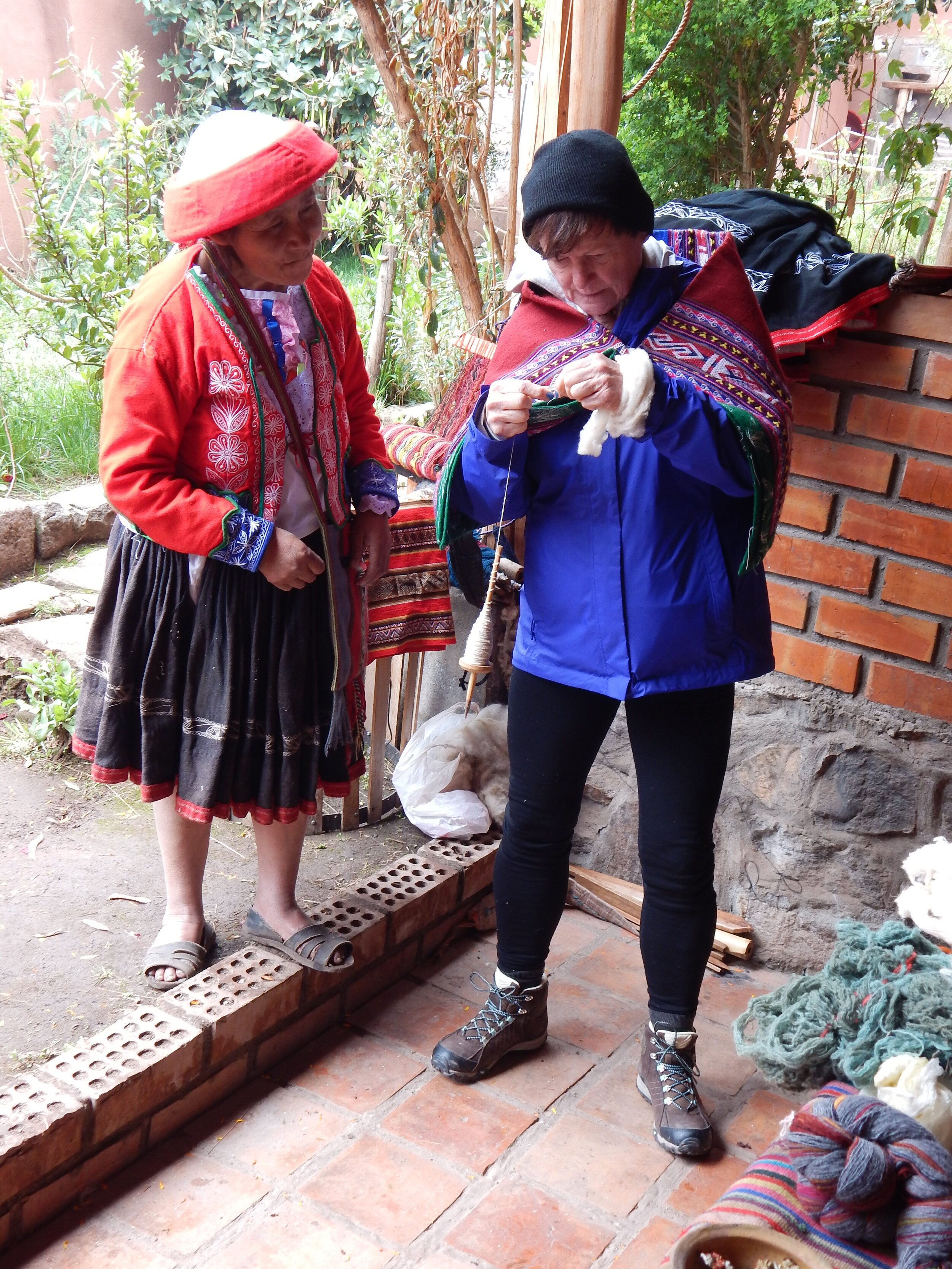

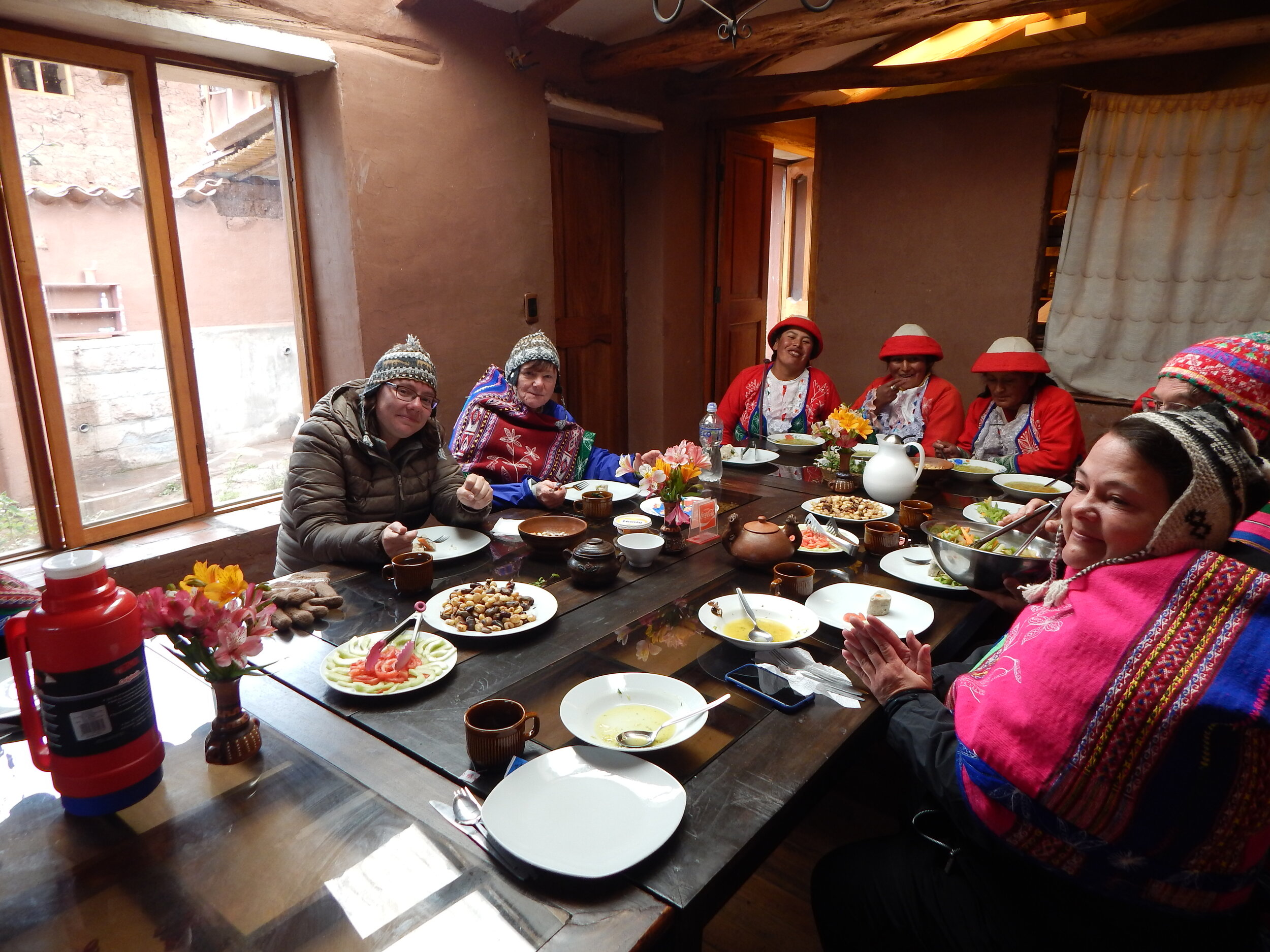
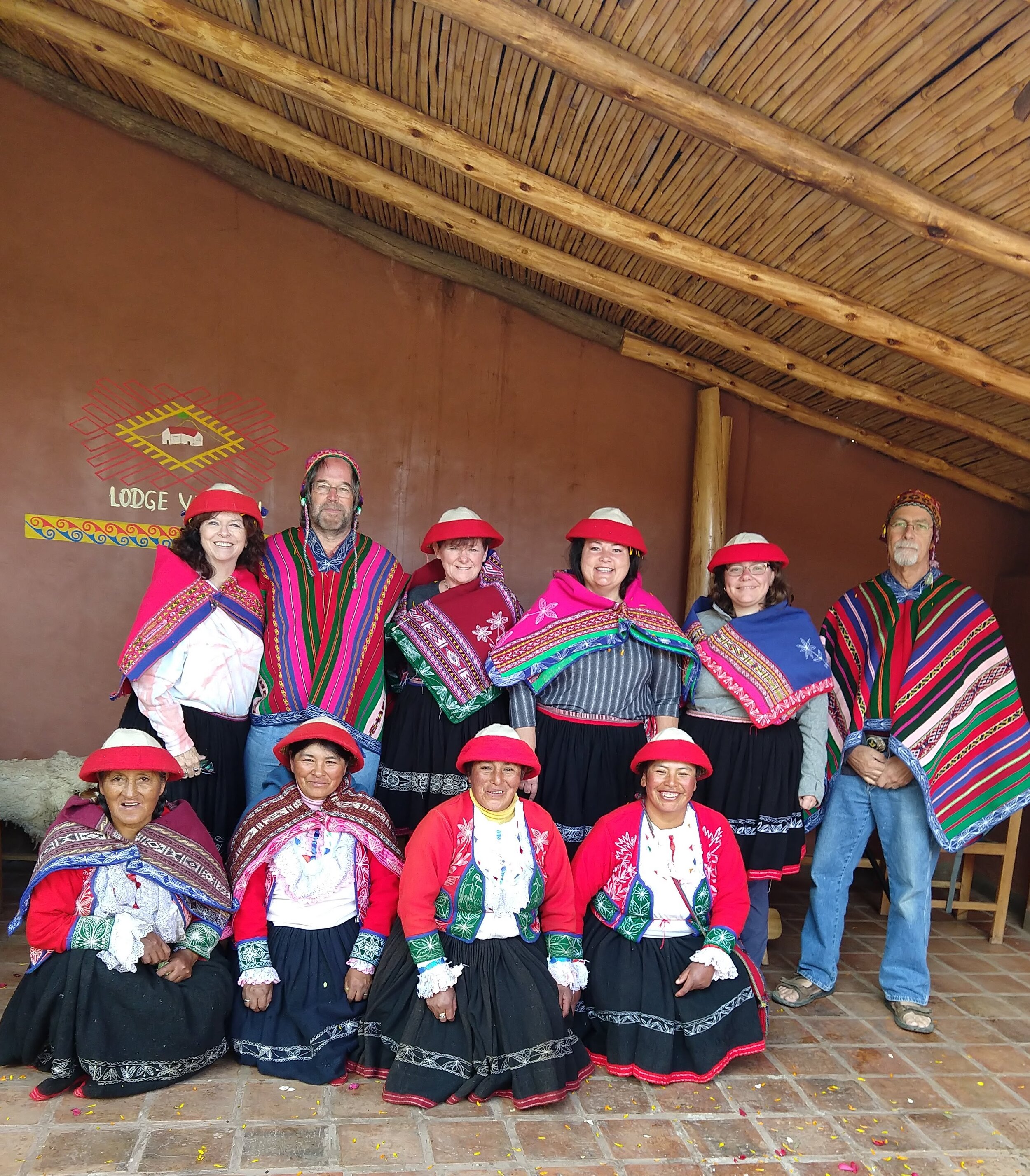



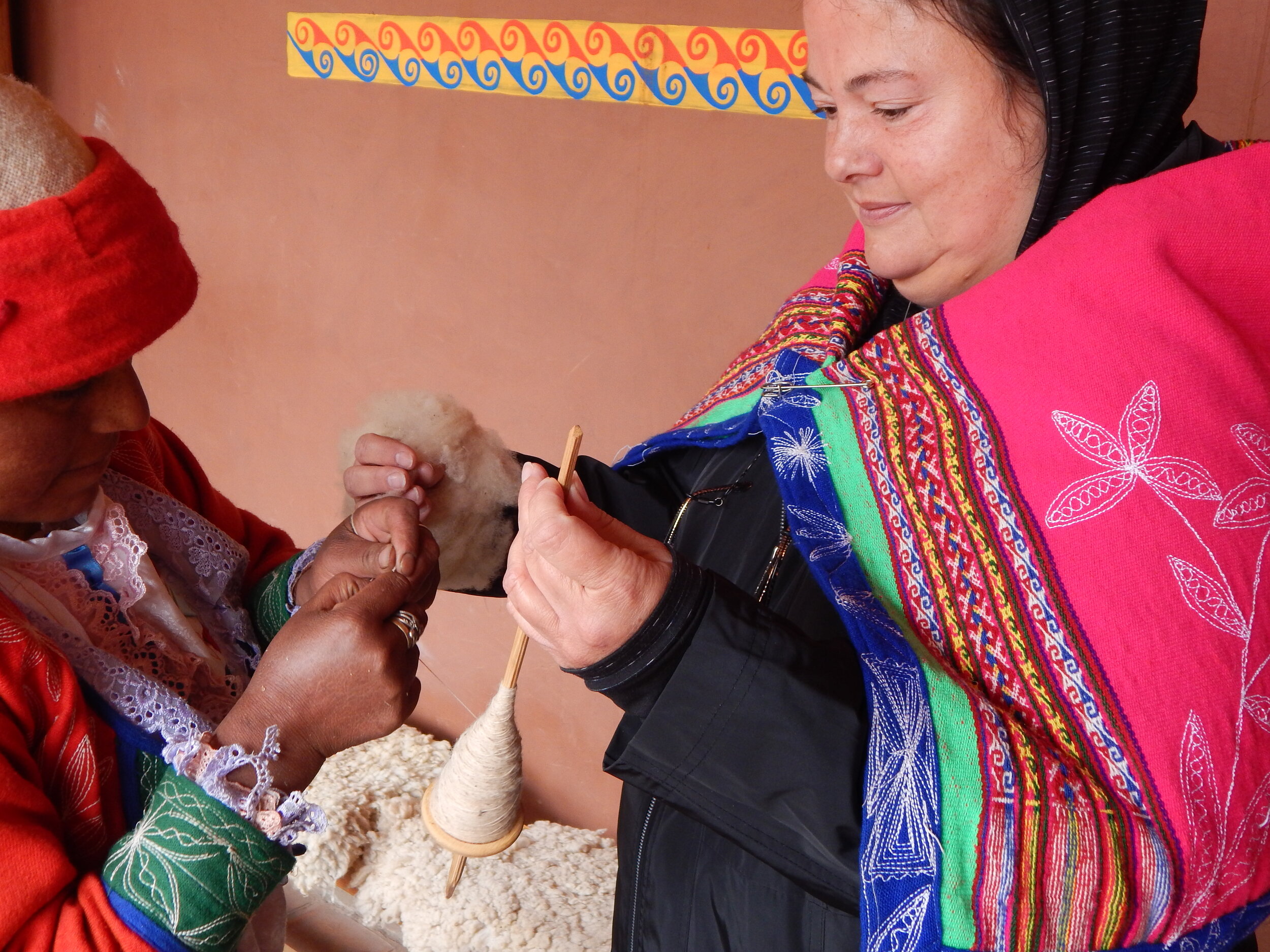
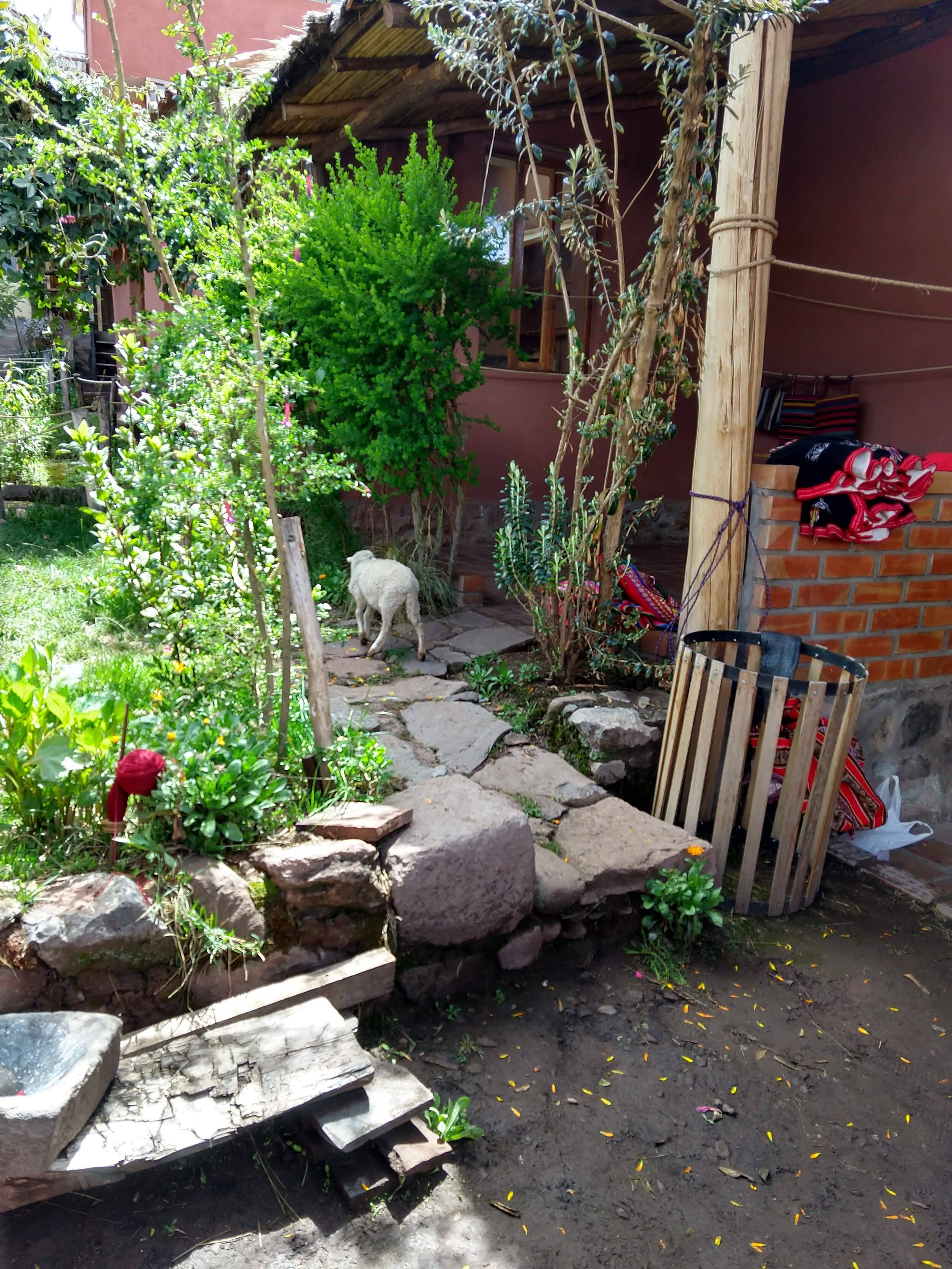
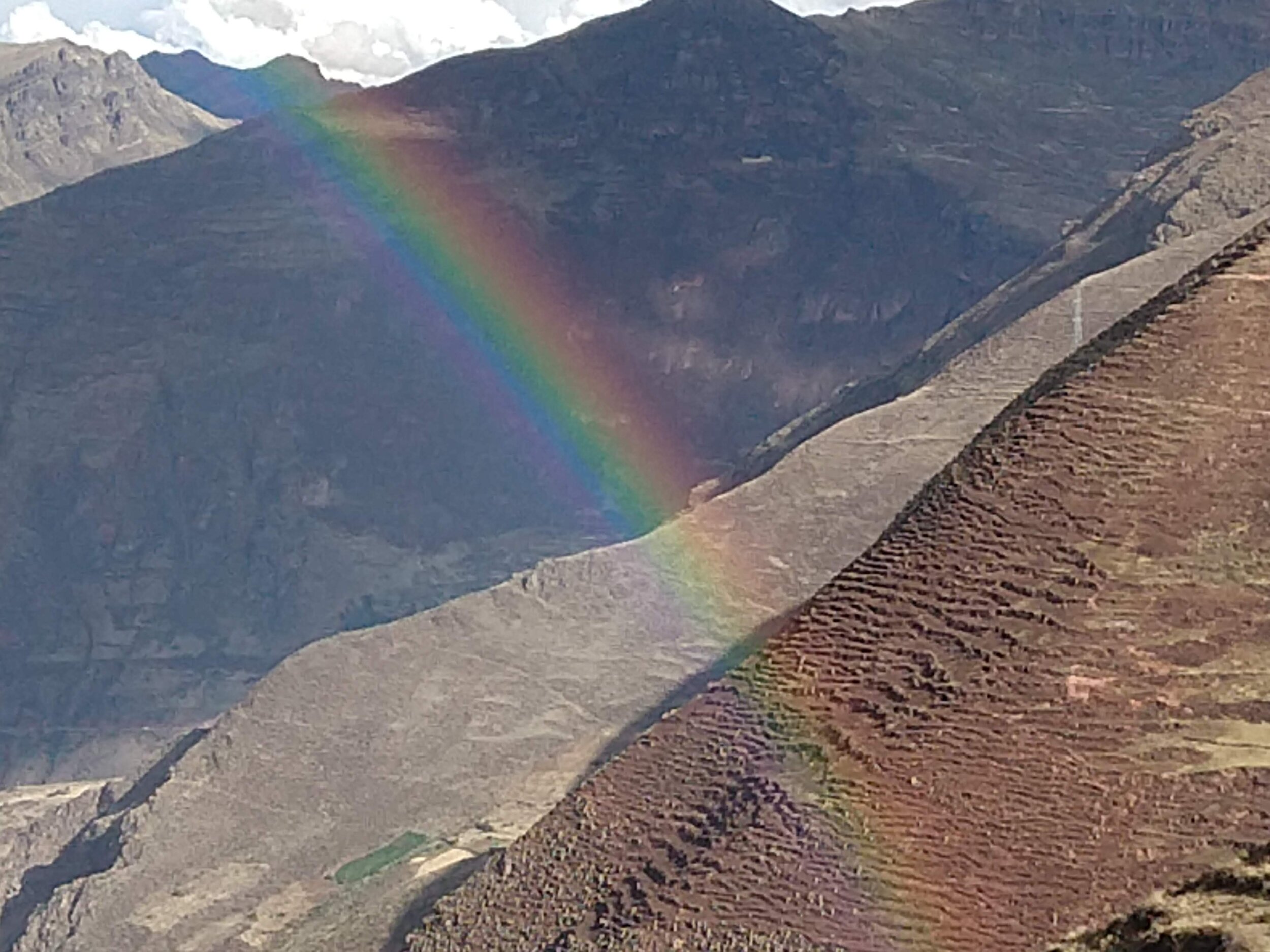
I absolutely love the people here. This traditional agricultural community welcomed us in grand form, with music and dance, and over the next day and a half made us feel at home by sharing their way of life with us by inviting us to join in, including pitching in with the work! The women here are known for their highly skilled weaving, while the men engage in traditional agriculture, farming the terraces. To learn more about Patabamba, scroll down to the 2018 trip to our last visit there.
Those of us who took part in the Huachuma ceremony at Sacsayhuaman later, began our special diet while here in Patabamba, distressing our hosts somewhat, as they love to feed their guests.
After taking leave of our friends in Patabamba, our van kept us waiting so long that we finally gave up on it and hired two local cars to drive us back to Cusco. What a ride that was! The steep unpaved roads were wet from a recent rain and the road was completely blocked by a delivery truck at one point, but we were delivered safe and sound at the field that Don Carlos had chosen for our Huachuma ceremony. Huachuma, or San Pedro, is a sacred visionary medicine used by Inka shamans for ages for the purpose of divination and communion with the deities. Offerings were made by Don Carlos and participation was open to each of us to what ever level we chose. A wonderful Despacho offering was made by Don Carlos and his assistant Monica to open the ceremony, and a local dog guarded us as though he had known us forever. After the ceremony was concluded, we returned to the hotel to rest.
Day seven was be a new experiment for Shamanic Voyages. Though we had previously announced that we would no longer be going to Machu Picchu, we realize that this particular place is still on many peoples bucket list, so we tried something new. While Crow remained in Cusco as guide for visits to museums and shopping, Alison and Sepharino took those who were interested to Machu Picchu for a day trip. There was an extra charge for this service to cover the additional expense, but it was popular enough with the group for us to consider doing it again in the future.
This was to be our last day in the Cusco region, so we invited Monica and Don Carlos to join us for a farewell dinner.
Don Carlos on far left and Monica on far right
The next morning we went to the bus station for the long ride to Puno. On the way we made several stops to see some sights and break up the trip. These included Andahuaylillas and the archeological complex of Raqchi which includes the ruins of the Temple of Wiracocha. The highest point on our trip was the pass in the town of La Raya at an altitude of 4338 m, (about 14,000 ft), where we paused briefly to visit their market. Our last stop was in Pucara, a very picturesque town famous for its sculpture. We arrived in Puno, (population 128,600), around 5:00 pm, where we checked into the Hotel La Hacienda Puno and Greeted Don Hermogenes, (Hermo), our Lake region shaman and his delightful wife Berta, who helped translate for us. A good dinner followed at our favorite Puno restaurant, La Casita. We then went back to the hotel to rest up for our busy day trip to follow.
After breakfast, Hermo and Berta accompanied us onto Lake Titicaca to two beautiful destinations. First was the floating islands of Uros. The inhabitants, the Uru, are a culturally distinct people who spend their entire lives on these man made islands of totora reeds, which they harvest in the shallows of the lake. Here we learned, of their many interesting traditions and history, as well as a demonstration of how the islands are constructed. We even got our passports stamped with an Uros stamp! After we concluded our visit of Uros, we headed 45 km offshore to the island of Taquile. This island of roughly 2,200 souls boasts four Apus, or mountaintop deities. Here we joined Don Hermo in ceremony to these deities and to Pachamama, or the Earth Mother. We had lunch on the summit of the island and spent some time catching our breath while we enjoyed the beauty of our surroundings and the company of the locals.
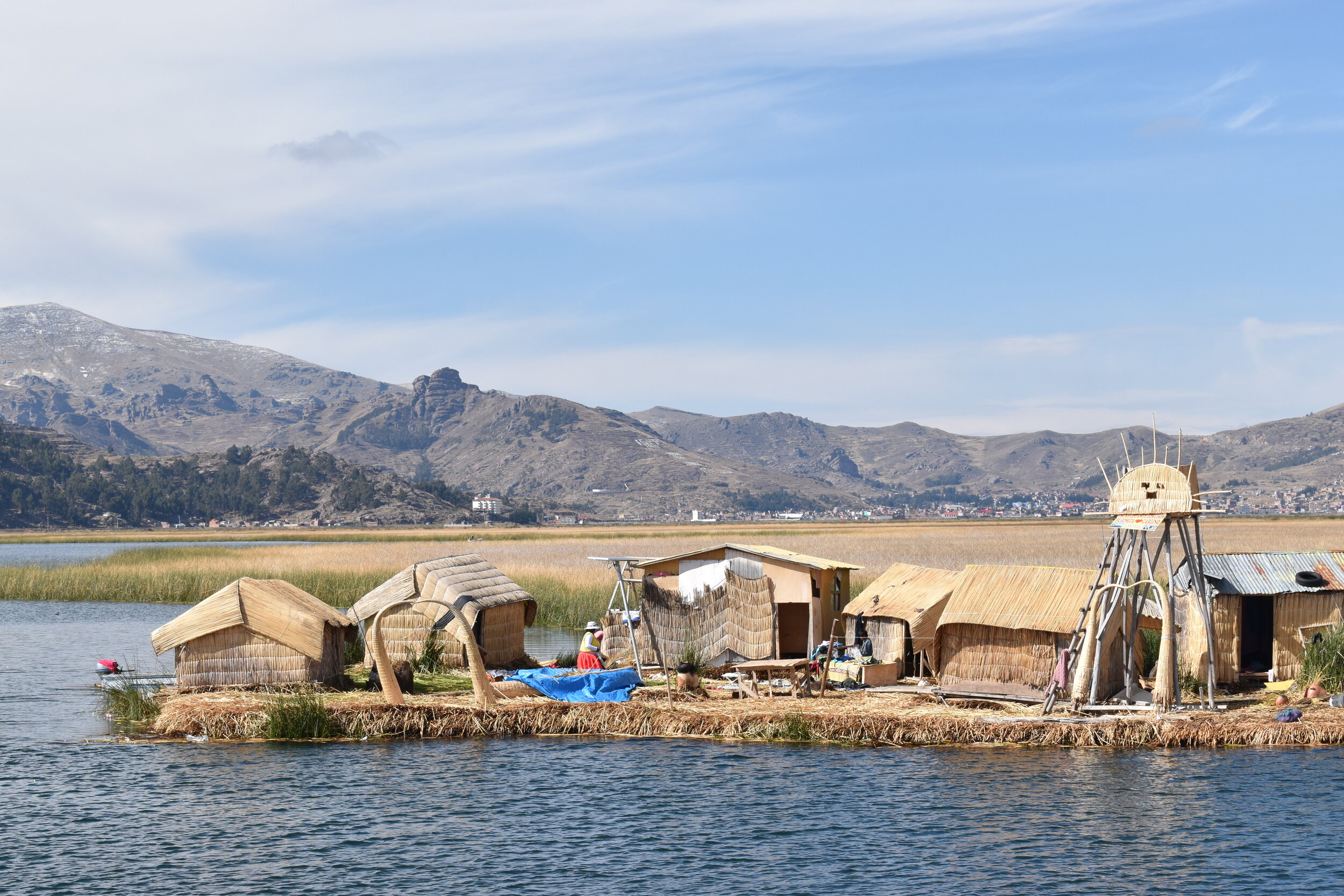

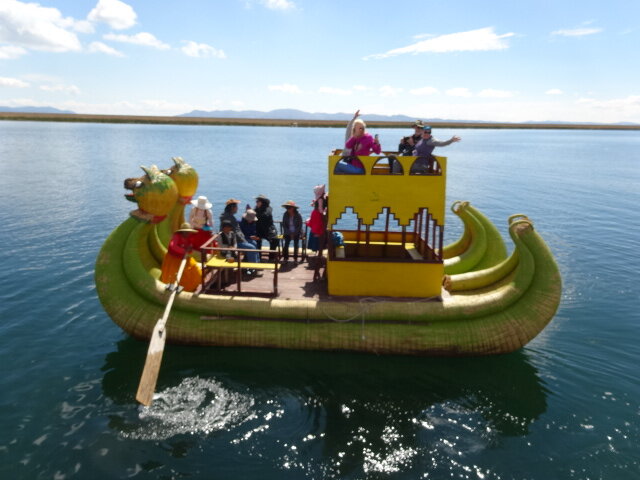
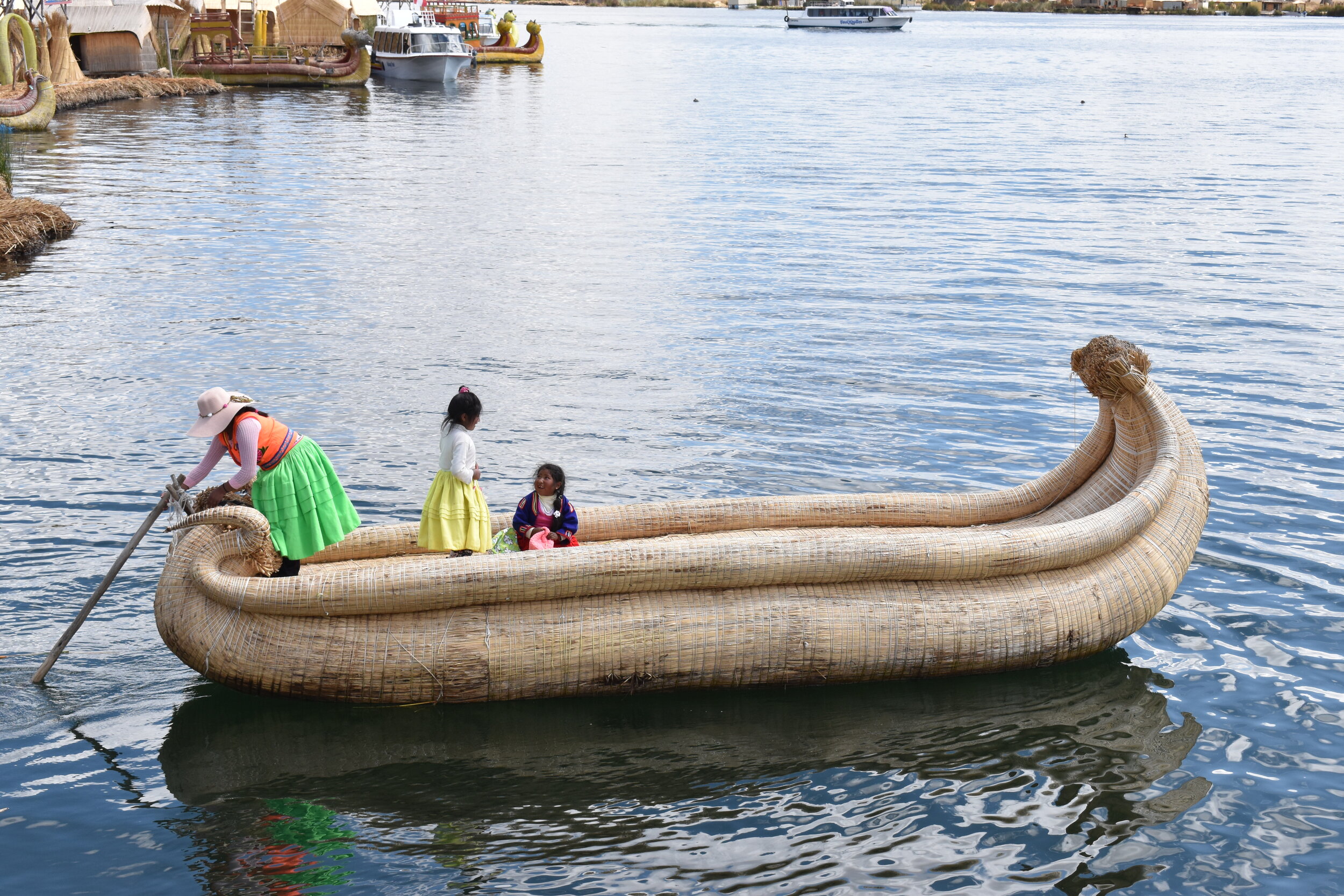
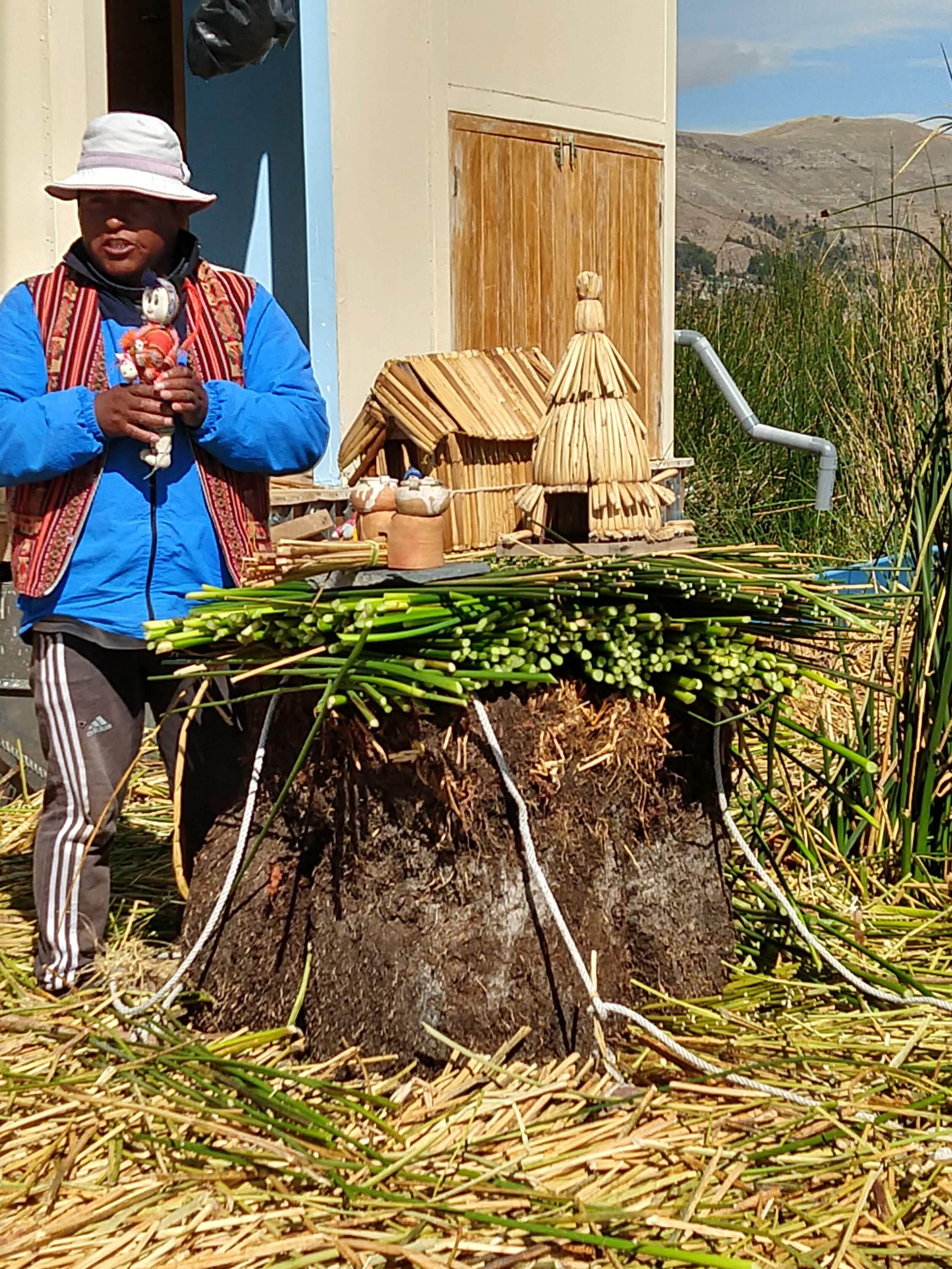
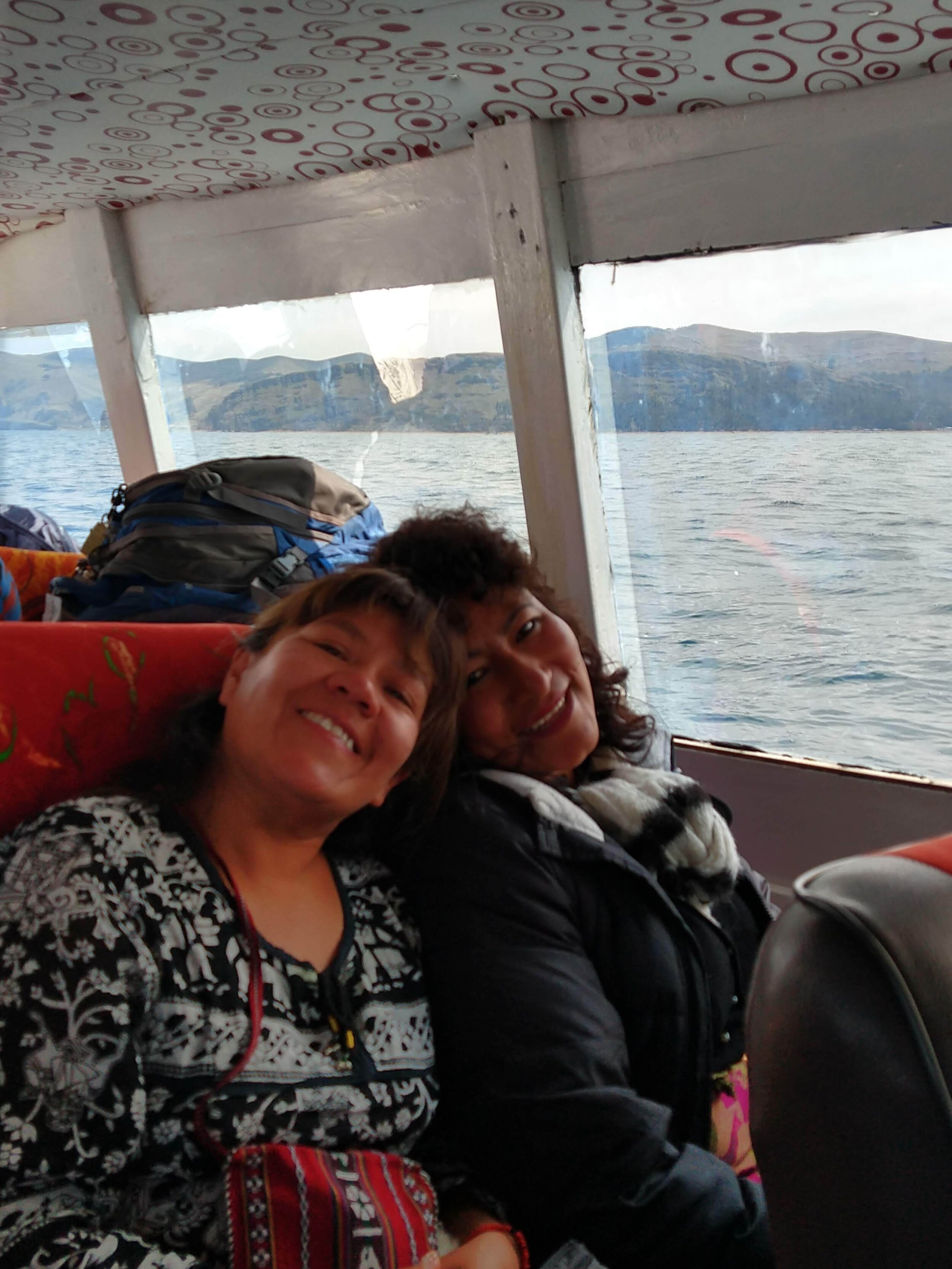
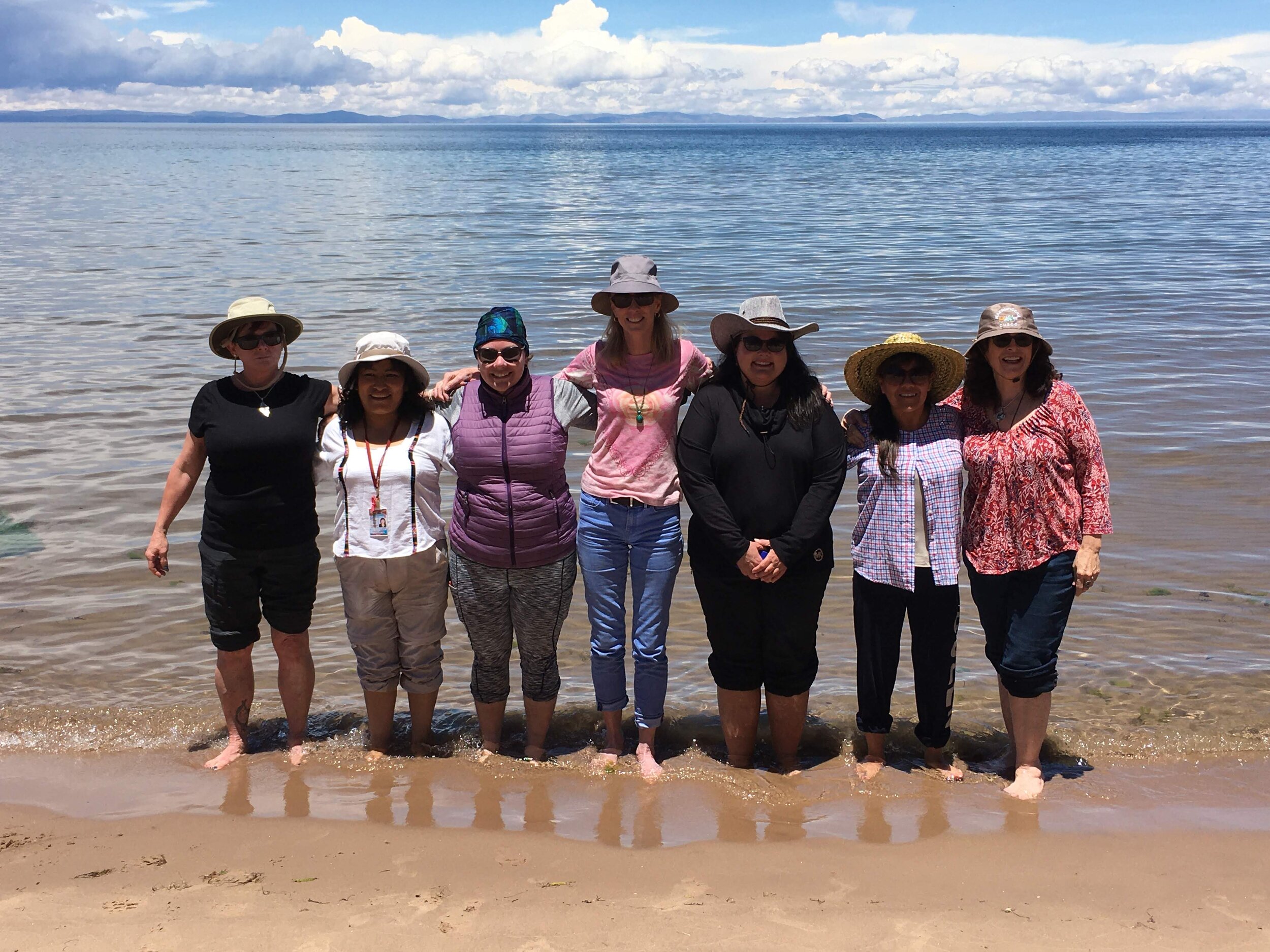

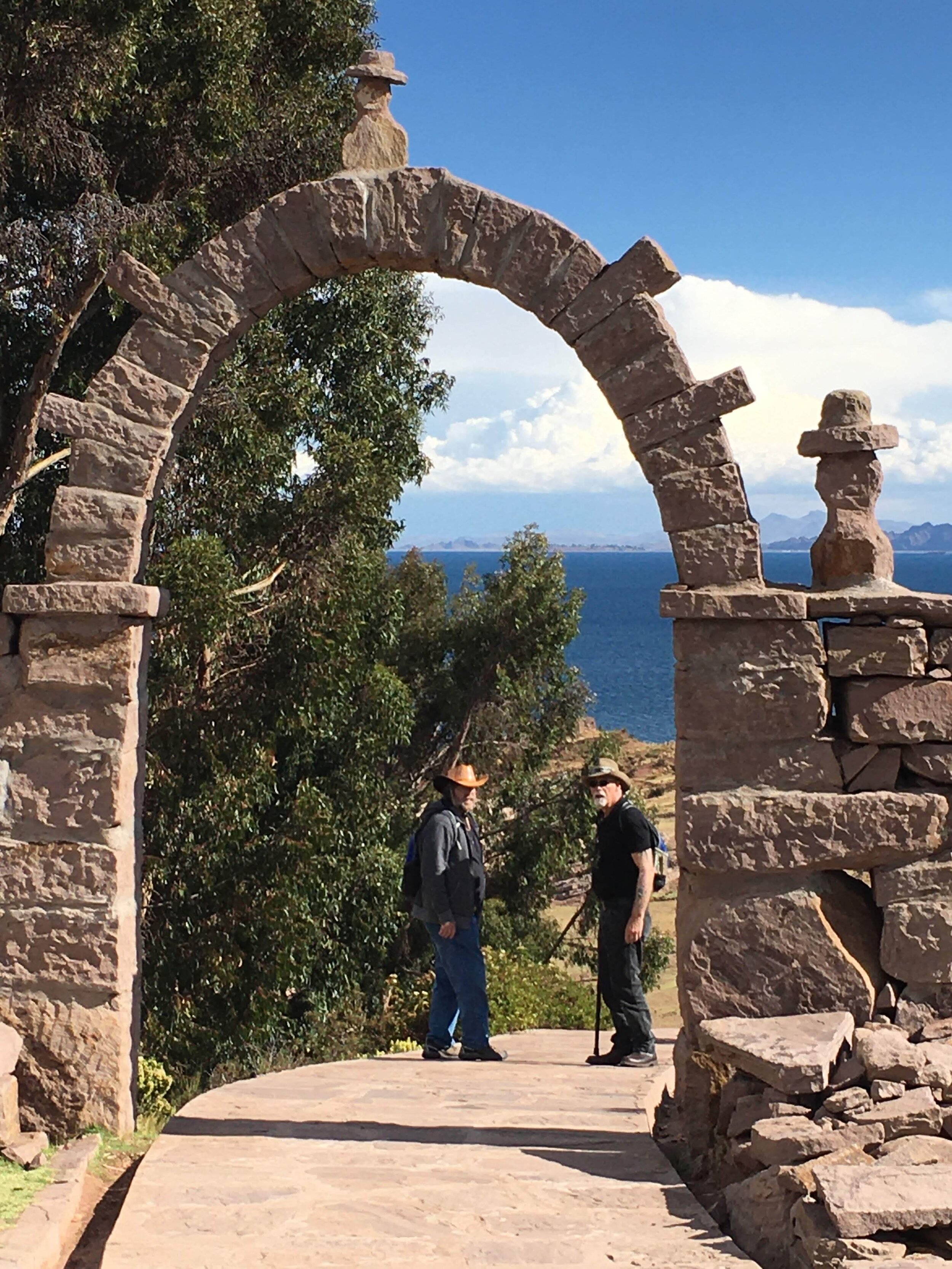
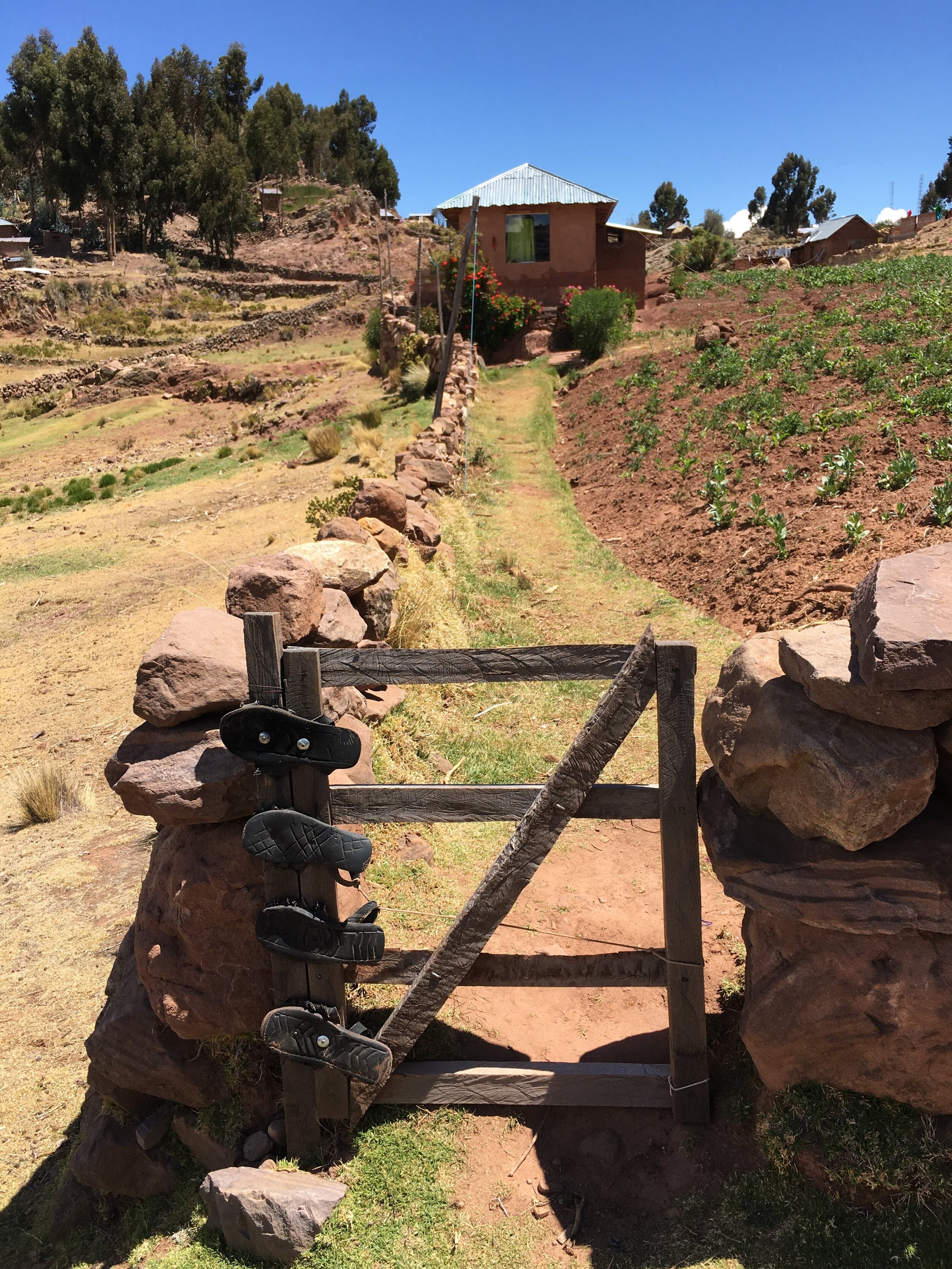
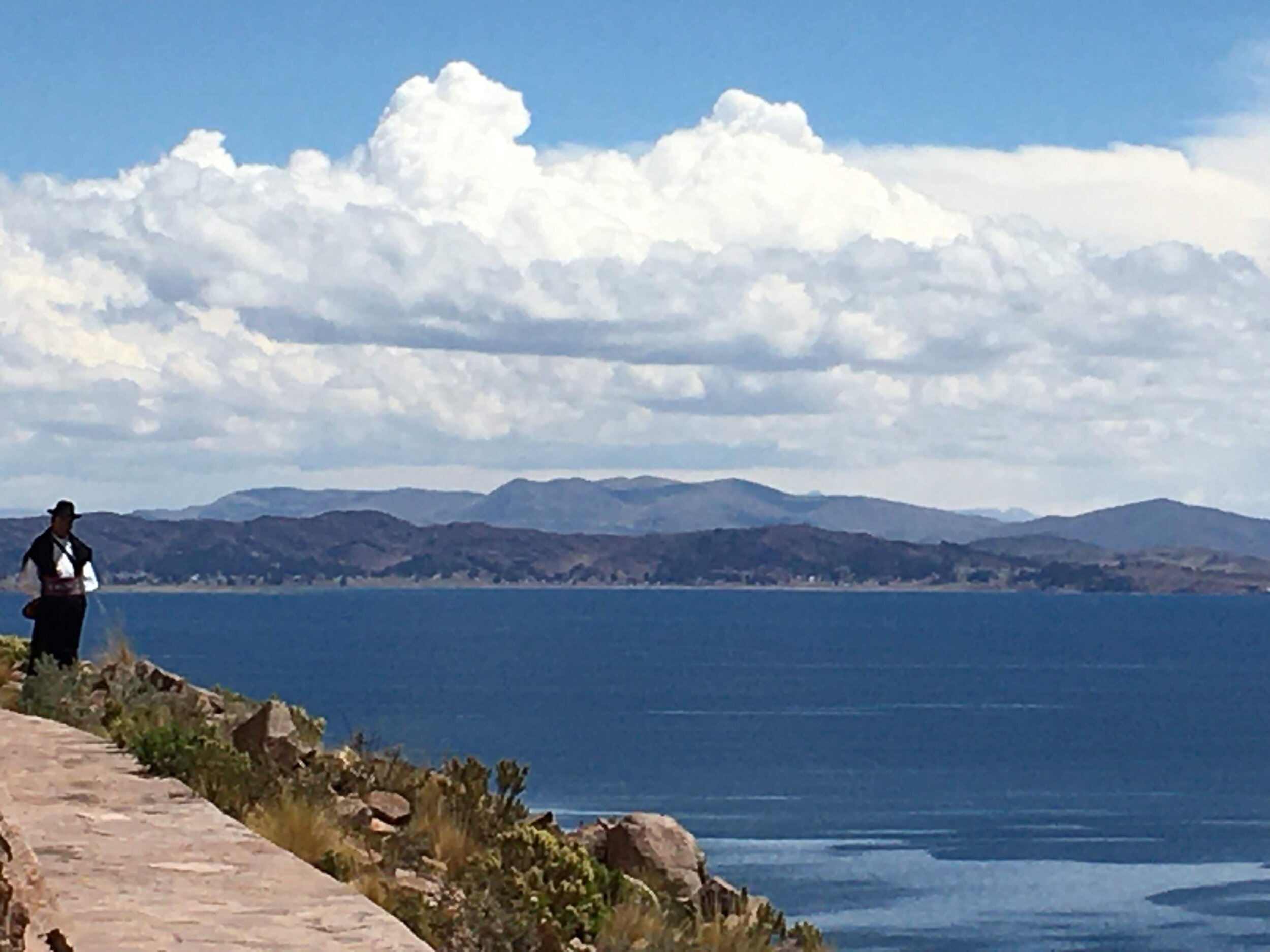
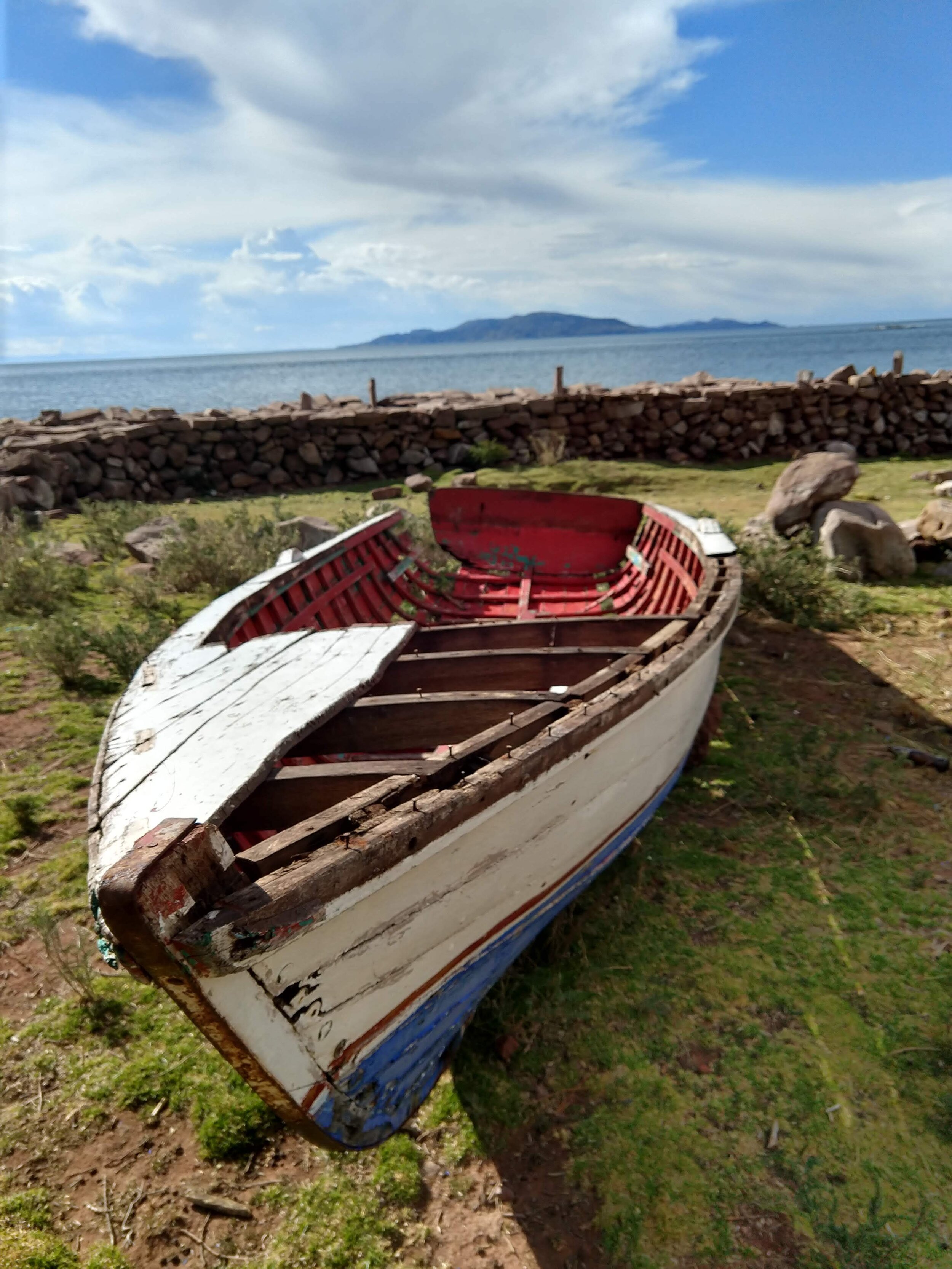
We returned to Puno and our hotel in the late afternoon, spending the evening in the city.
The next day we left Peru for Bolivia. On our way, we made a stop in the Stone Forest of Juli, to make observances and hold ceremony at the Temple of Aramumuru, also known as the Star Portal. We began by honoring the representatives of the three realms, the Serpent for the lower realm, the Puma for the middle realm and the Condor for the upper realm. This process took us across a plain, (collecting trash along the way), to the temple itself, where we held a purification and prayer ceremony including an interaction with the portal itself. After making our offerings, we continued on to the Bolivian border and Copacabana.
In Copacobana we met up with our ever cheerful friend Juan Carlos, our Bolivian guide, who joined us for our time there. We then boarded our private boat and embarked for the Island of the Sun and our lodgings for the next three nights, the Hotel Pumapunku. I love this spot. It is right on the water, and a short walk from the Temple of the Sun.
Soon after arriving on the Island of the Sun, we went to the temple there to drum to the sunset.
We departed the island early on the morning of our eleventh day, for several ceremonies at various locations including Koa Island and the Temple of the Virgins on the Island of the Moon. Our first stop was Koa, an uninhabited Island that harbors a cave that locals venerate as the portal to the submerged Crystal City of Lake Titicaca. The cave is actually two caverns sharing one entrance. The cavern to the right is the masculine, the one to the left, the feminine. The former is relatively level, gradually narrowing to a thin, impassable crevice that penetrates to the opposite side of the island, where light from that side filters in. The latter veers more toward a wider part of the island, first gently rising, then dropping off and becoming nearly vertical as it plunges down into the darkness as a hole just large enough to squeeze through if you were foolhardy enough to try. As we approached this far part of the cavern, the smell of flowers filled the air. This place was absolutely magical. We then held ceremony with Hermo, left our offerings and departed for the open water where we made another offering to the Crystal City itself, above what appeared to be large building blocks under the surface.
After we got underway, we made for the Island of the Moon and the Temple of the Virgins there. This was once an educational and spiritual center where young women were trained for important roles in Inka society. It continues to be an important spiritual center today. Once again, Hermo led us in a beautiful ceremony there.
Day twelve had less structure and we took advantage of the time to walk about the island, explore, do some drumming and healing work of our own, and after lunch three hardy souls joined Crow for a swim in the worlds highest major lake, ( at 3810 m or 12,500 ft above sea level). This entitles Alison, Alex and Doreen for the dubious distinction of membership in the Titicaca Trucha Society.
Toward the close of the day, the disturbing news of escalating violence in the Capitol reached us, eight people having lost their lives.
Due to the mounting unrest due to the coup against President Evo Morales, we decided to leave Bolivia early the next day and cancel our visit to Tiwinacu. Instead, Hermo suggested that we visit a Tiwinacu era temple located in Peru, on the way back to our hotel in Puno. This temple was erected to celebrate fertility, and honor the relationship between the life giving Sun and the fertile Earth. Hermos’ ceremony here may not have been based in deep tradition, but was a thoughtful and appropriate recognition of the importance of both the feminine and masculine energies.
After the ceremony, in the phallus forest
After breakfast at the hotel and some last minute souvenir shopping, we packed up our belongings and Don Hermo accompanied us to the Juliaca Airport for our return trip to Lima. Our departures were staggered, so saying our goodbyes was more akin to mist dissipating on the breeze. But if past trips are any indicator, our paths will continue to cross from time to time, the shamanic path always being best when shared.
Fare well my friends…


